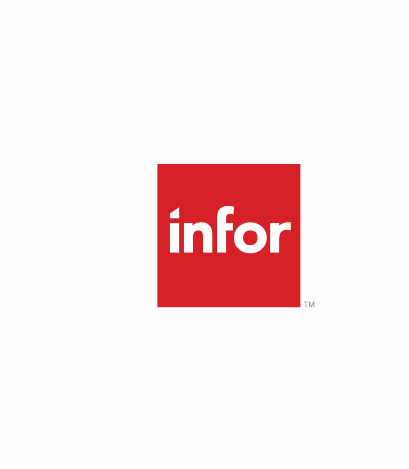
Infor LN Invoicing User Guide
for Invoicing
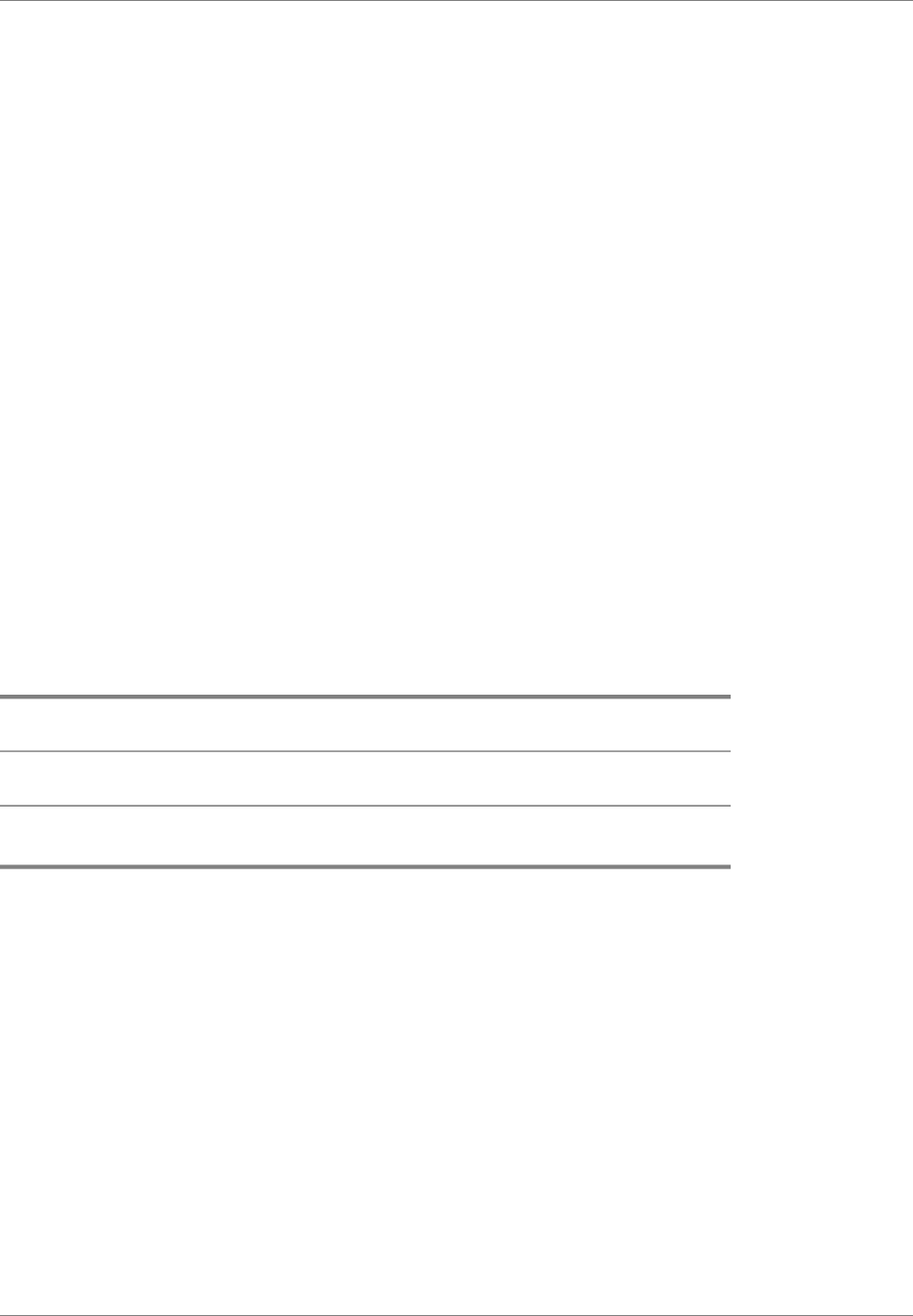
Copyright © 2024 Infor
Important Notices
The material contained in this publication (including any supplementary information) constitutes and contains confidential
and proprietary information of Infor.
By gaining access to the attached, you acknowledge and agree that the material (including any modification, translation
or adaptation of the material) and all copyright, trade secrets and all other right, title and interest therein, are the sole
property of Infor and that you shall not gain right, title or interest in the material (including any modification, translation or
adaptation of the material) by virtue of your review thereof other than the non-exclusive right to use the material solely
in connection with and the furtherance of your license and use of software made available to your company from Infor
pursuant to a separate agreement, the terms of which separate agreement shall govern your use of this material and all
supplemental related materials ("Purpose").
In addition, by accessing the enclosed material, you acknowledge and agree that you are required to maintain such
material in strict confidence and that your use of such material is limited to the Purpose described above. Although Infor
has taken due care to ensure that the material included in this publication is accurate and complete, Infor cannot warrant
that the information contained in this publication is complete, does not contain typographical or other errors, or will meet
your specific requirements. As such, Infor does not assume and hereby disclaims all liability, consequential or otherwise,
for any loss or damage to any person or entity which is caused by or relates to errors or omissions in this publication
(including any supplementary information), whether such errors or omissions result from negligence, accident or any
other cause.
Without limitation, U.S. export control laws and other applicable export and import laws govern your use of this material
and you will neither export or re-export, directly or indirectly, this material nor any related materials or supplemental
information in violation of such laws, or use such materials for any purpose prohibited by such laws.
Trademark Acknowledgements
The word and design marks set forth herein are trademarks and/or registered trademarks of Infor and/or related affiliates
and subsidiaries. All rights reserved. All other company, product, trade or service names referenced may be registered
trademarks or trademarks of their respective owners.
Publication Information
cisliug (U8935)Document code
10.5 (10.5)Release
February 6, 2024Publication date

About this document
.................9Chapter 1 Invoicing Overview............................................................................................
.................9Invoicing.......................................................................................................................
.................9Invoice processing.......................................................................................................
...............10Direct processing and ION Workflow.................................................................
...............10Printing invoices...........................................................................................................
...............13Chapter 2 Invoicing Setup..................................................................................................
...............13Setting up Invoicing.....................................................................................................
...............13Setting up invoice combining and aggregation............................................................
...............14Setting up invoice configuration...................................................................................
...............14Setting up invoice distribution......................................................................................
...............14Setting up mass invoicing............................................................................................
...............15Setting up ad hoc invoicing..........................................................................................
...............15Setting up self-billed invoicing.....................................................................................
...............16Setting up financial data..............................................................................................
...............16Setting up tax data.......................................................................................................
...............16Setting up the intracommunity listing...........................................................................
...............17Collecting the sales listing data..........................................................................
...............17Printing texts on invoices.............................................................................................
...............18Printing header and footer texts on invoices................................................................
...............19Printing additional text and detail texts on invoices.....................................................
...............19Printing reference texts on invoices.............................................................................
...............20Printing tax articles on invoices...................................................................................
...............20Printing business partner bank details on invoices......................................................
...............20Printing euros...............................................................................................................
...............21Chapter 3 Invoicing Procedure..........................................................................................
...............21Invoicing procedure.....................................................................................................
...............21Release invoicing data to Invoicing.............................................................................
Table of Contents

...............22View invoicing data......................................................................................................
...............23Correct invoicing data..................................................................................................
...............25Confirm invoicing data.................................................................................................
...............25Create an invoicing batch............................................................................................
...............25Process the invoicing batch.........................................................................................
...............27Printing and posting the invoices separately......................................................
...............27Reprint printed and posted invoices............................................................................
...............27Selecting order data for invoicing................................................................................
...............28Overwriting the transaction types and series.....................................................
...............29Creating separate invoices for each kind of order.............................................
...............29Composing criteria.......................................................................................................
...............30Sending sales invoices through EDI............................................................................
...............33Chapter 4 Mass Invoicing...................................................................................................
...............33Job processing of invoices...........................................................................................
...............35Chapter 5 Ad Hoc Invoicing................................................................................................
...............35Manual sales invoices..................................................................................................
...............39Chapter 6 Self-Billed Invoicing...........................................................................................
...............39Self-billed invoice matching.........................................................................................
...............40Approve matched self-billed invoices.................................................................
...............41Chapter 7 Invoicing Data Maintenance..............................................................................
...............41Invoicing statuses........................................................................................................
...............43Credit and Rebill..........................................................................................................
...............45Chapter 8 Invoicing Utilities...............................................................................................
...............45Removing invoicing data..............................................................................................
...............47Chapter 9 Taxation..............................................................................................................
...............47Tax date.......................................................................................................................
...............47Generating the intracommunity listing.........................................................................
...............48Subcontracting indicator....................................................................................

...............48Generating the next intracommunity listing........................................................
...............48Updating the sales listing...................................................................................
...............48North American expense purchase tax........................................................................
...............49Using a tax provider.....................................................................................................
...............49To start using a tax provider...............................................................................
...............50Setting up the tax-provider interface............................................................................
...............51Simplify the tax-code structure...........................................................................
...............51Use separate tax codes for financial transactions.............................................
...............52Stamp tax.....................................................................................................................
...............52Tax on separate invoice...............................................................................................
...............55Chapter 10 Revenue Recognition......................................................................................
...............55Cost plus invoicing.......................................................................................................
...............56Unit rate invoicing........................................................................................................
...............57Installment invoicing....................................................................................................
...............57Progress invoicing.......................................................................................................
...............58Delivery-based invoicing..............................................................................................
...............58Service contract installments.......................................................................................
...............59Service Order Invoicing...............................................................................................
...............59Call invoicing................................................................................................................
...............61Chapter 11 Miscellaneous...................................................................................................
...............61Document authorization using ION Workflow..............................................................
...............62Purchase invoice authorization....................................................................................
...............62Print a report......................................................................................................
...............62Purchase invoice authorization history..............................................................
...............65Appendix A Glossary..........................................................................................................
Index


This document describes the process to set up, generate, and handle the sales invoices that originate
from the various LN packages, in Invoicing. The creation and use of manual sales invoices and interest
invoices, which includes the usage and setup of self-billed invoice matching, are also detailed.
Intended audience
This document is intended for the following categories of users:
▪
Key users who set up Invoicing
▪
Users who perform and monitor the invoicing process
Assumed knowledge
Understanding this document is easier if you have some basic knowledge of the functionality of the
various logistic LN packages and LN Financials
Document summary
This document contains the following chapters:
▪
Invoicing Overview
Provides an introduction to Invoicing, sources of billable lines, invoicing process and status
(both with and without workflow), and the concept of central invoicing.
▪
Invoicing Setup
Provides instructions on how to combine and aggregate invoices, configure invoices, set up
invoice distribution, mass, ad hoc and self-billed invoicing, and specify posting data, and tax
data.
▪
Invoicing Procedure
Describes all steps in the invoicing process.
▪
Mass Invoicing
Provides an overview of mass invoicing, and information on recurring invoicing batches, and
the Mass Invoicing Workbench (cisli3620m000) session.
▪
Ad Hoc Invoicing
Provides an overview of ad hoc invoicing, information on the Invoicing 360 (cisli3600m000)
session, and the process of manual sales invoicing.
▪
Self-Billed Invoicing
Provides an overview of self-billed invoicing, information on the Self-Billing Workbench
(cisli5620m000) session, and the process of manual matching.
▪
Invoicing Data Maintenance
Provides information on user profile authorization, maintenance options, maintenance of
billable lines and invoices, credit and rebill functionality, and credit invoice lines.
▪
Invoicing Utilities
Describes tools that you can use to generate sales listings, update tax registers, archive and
delete invoice data, and clear obsolete invoice tables.
Infor LN Invoicing | User Guide for Invoicing | 7
About this document

▪
Taxation
Describes various country-specific tax features, such as tax date, sales listing, Vertex
integration, and tax on separate invoice.
▪
Revenue Recognition
Includes in formation on project invoicing and service contract invoicing.
▪
Miscellaneous
Covers a variety of topics, including invoice workflow authorization, invoice distribution,
shipment-based invoicing, and installment invoicing.
▪
Glossary
Provides definitions of the terms and concepts used in this document, in alphabetical order.
How to read this document
This document was assembled from online help topics. As a result, references to other sections in the
manual are presented as shown in the following example:
For details, refer to To print texts on invoices. To locate the referred section, please refer to the Table
of Contents or use the Index at the end of the document.
Underlined terms indicate a link to a glossary definition. If you view this document online, you can click
the underlined term to go to the glossary definition at the end of the document .
Comments?
We continually review and improve our documentation. Any remarks/requests for information concerning
this document or topic are appreciated. Please e-mail your comments to documentation@infor.com .
In your e-mail, refer to the document number and title. More specific information will enable us to process
feedback efficiently.
Contacting Infor
If you have questions about Infor products, go to Infor Concierge at https://concierge.infor.com/ and
create a support incident.
If we update this document after the product release, we will post the new version on the Infor Support
Portal. To access documentation, select Search Browse Documentation. We recommend that you
check this portal periodically for updated documentation.
If you have comments about Infor documentation, contact documentation@infor.com .
8 | Infor LN Invoicing | User Guide for Invoicing
About this document

Invoicing
You use Invoicing to create billable lines, which can be used to invoice business partners. Billable lines
can originate from the following sources:
▪
Sales, for example, sales orders and rebates
▪
Project
▪
Procurement, for example, purchase orders
▪
Warehousing
▪
Freight
▪
Service, for example, service orders and service calls
▪
Interest invoices generated in Accounts Receivable
▪
Debit notes and credit notes from Cash Management
▪
Sales invoices manually entered in Invoicing
Invoice processing
An invoice needs to be composed before it can be draft printed. The draft print is required to do initial
verification of basic data on the invoice, such as customer VAT ID, terms of payment, and legal text.
Once an invoice is printed, it is a legal invoice. If at this stage an invoice is not correct, it needs to be
canceled and recreated.
When the user has - optionally - draft printed the invoice, the invoice must be submitted for approval.
Its status will then be set to Pending Approval at once, which means that the invoice will be blocked
for processing. Any session that processes a range of invoices will skip this invoice. The status submitted
for ION Workflow is Ready to Print. This status is stored and will be visible on the invoice after the
invoice is approved in ION Workflow.
If a user runs the Compose/Print/Post Invoices (cisli2200m000) session as a single step, all invoices
should be submitted for ION Workflow approval. As a consequence, this process is interrupted and
Infor LN Invoicing | User Guide for Invoicing | 9
1
Chapter 1
Invoicing Overview

cannot be completely executed for invoices that need to be composed, printed, and posted. Invoices
that only require printing and posting and that have status Ready to Print can be processed, of course.
After the invoice is approved in ION Workflow, the status of the invoice is set to Ready to Print and
from here the invoice can be selected for final printing and posting.
If the invoice is rejected in ION Workflow, the status of the invoice is reset to On Hold. From here, the
data must be corrected after which the invoice can be submitted again for ION Workflow approval. This
process could be repeated multiple times.
Direct processing and ION Workflow
Some types of invoices in LN allow for direct processing, such as collect orders ( Order Management),
debit/ credit notes ( Financials), and manual sales invoices ( Invoicing).
If ION Workflow is implemented, however, only collect orders will be enabled for direct processing,
whereas debit/credit notes and manual sales invoices will be subject to ION Workflow approval.
Printing invoices
The following table shows which invoicing statuses are valid for printing.
10 | Infor LN Invoicing | User Guide for Invoicing
Invoicing Overview
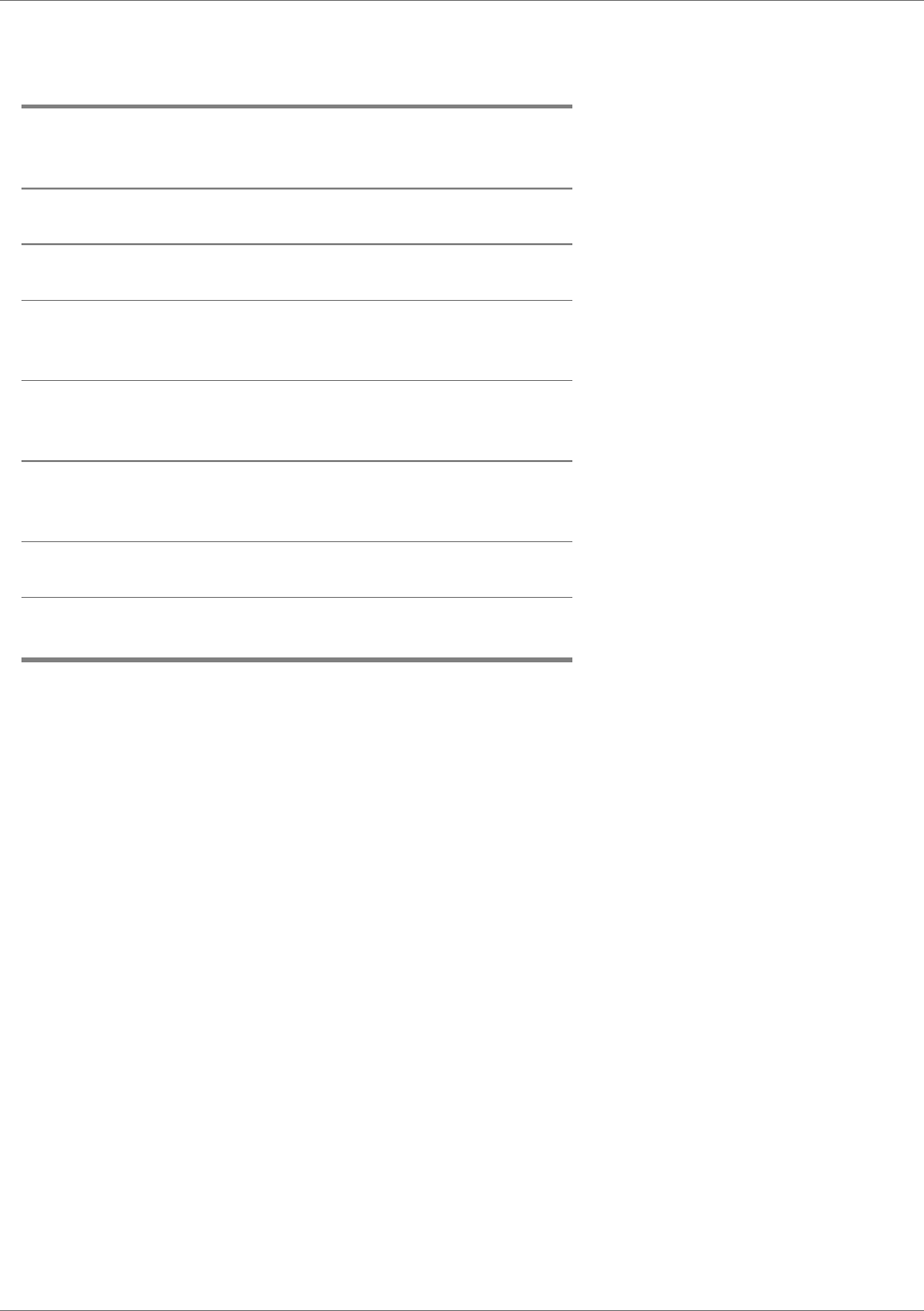
Print Option Available?
ReprintOriginalDraftInvoicing Sta-
tus
On Hold
Yes*Confirmed
YesReady to
Submit
YesPending Ap-
proval
YesYesReady to
Print
Yes Printed
Yes Posted
* Preview
Infor LN Invoicing | User Guide for Invoicing | 11
Invoicing Overview

12 | Infor LN Invoicing | User Guide for Invoicing
Invoicing Overview
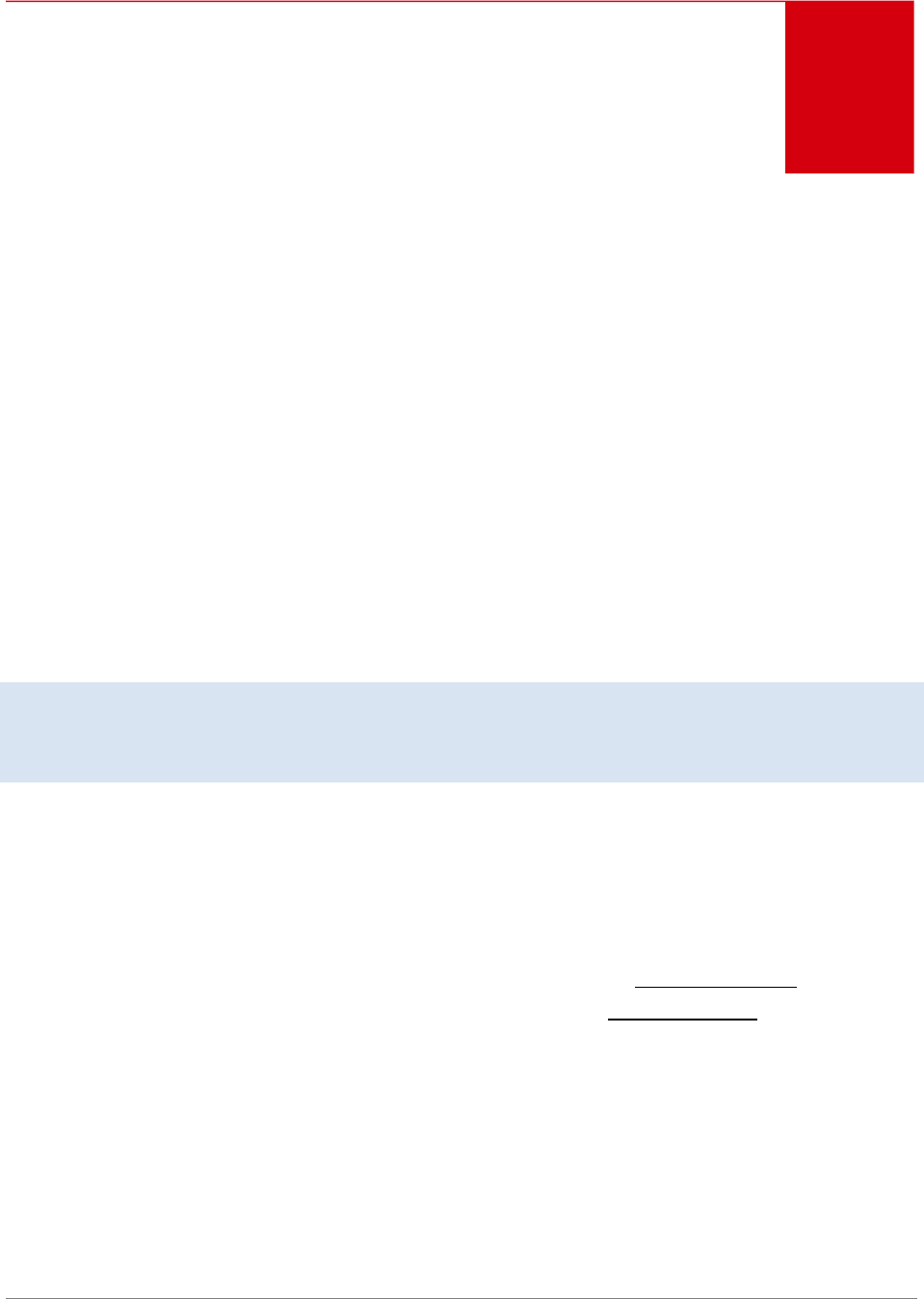
Setting up Invoicing
To set up Invoicing, refer to the following topics:
▪
Setting up invoice combining and aggregation (p. 13)
▪
Setting up invoice configuration (p. 14)
▪
Setting up invoice distribution (p. 14)
▪
Setting up financial data (p. 16)
▪
Setting up tax data (p. 16)
▪
Setting up mass invoicing (p. 14)
▪
Setting up ad hoc invoicing (p. 15)
▪
Setting up self-billed invoicing (p. 15)
Note
All required invoicing-related parameters and settings can be accessed through the Invoicing Parameters
(cisli0100m000) session.
Setting up invoice combining and aggregation
To set up invoice combining and aggregation:
1. In the Invoicing Methods (tcmcs0555m000) session, specify invoicing methods.
2. In the Invoicing Options (cisli1520m000) session, specify invoicing options.
3. In the Invoicing Parameters (cisli0100m000) session, optionally select Aggregate Shipment
Lines.
Infor LN Invoicing | User Guide for Invoicing | 13
2
Chapter 2
Invoicing Setup

Setting up invoice configuration
To set up invoice configuration:
1. In the Invoice Layouts (cisli1150m000) session, specify layouts for a fixed number of invoice
layout types.
2. In the Invoice Layouts by Business Partner (cisli1159m000) session, optionally link invoice
layouts to a combination of invoice-to business partner and department.
3. In the Invoicing Options (cisli1520m000) session, specify invoicing options.
4. In the Invoice Texts (cisli1110m000) session, optionally specify language-specific standard
texts for invoice headers and footers.
5. In the Invoicing User Profiles (cisli0110m000) session, specify default print options, and whether
a user is authorized to change invoicing data.
Setting up invoice distribution
To set up invoice distribution:
1. In the Invoice Delivery Methods (tcmcs0156m000) session, specify invoice delivery methods.
2. In the Document Output Management Rules (tccom6170m000) session, do the following:
▪
For a combination of document type and business partner, or a set of business partners,
specify how invoices must be processed.
▪
Specify the destination types ( Mail, Fax, or Print) that apply to the recipients.
▪
Store the address information, such as e-mail address or fax number.
3. In the Invoice Printing Sequences (cisli1540m000) session, specify printing sequences for
original invoices.
4. In the Invoicing User Profiles (cisli0110m000) session, specify default devices and print options.
Setting up mass invoicing
To set up mass invoicing:
1. In the Invoicing Batch Templates (cisli1125m000) session, specify at least one invoicing batch
template.
2. In the Invoicing Parameters (cisli0100m000) session, on the Processing tab, specify defaults
for invoice date, printing, and posting.
14 | Infor LN Invoicing | User Guide for Invoicing
Invoicing Setup

3. For batch processing, under Processing Defaults, in the Composing Reference Based
fields, specify default templates for invoicing batches and invoicing options.
Setting up ad hoc invoicing
To set up ad hoc invoicing:
1. In the Invoicing Batch Templates (cisli1125m000) session, specify at least one invoicing batch
template.
2. In the Invoicing Parameters (cisli0100m000) session, you can specify these parameters:
▪
Select or clear the Use General Ledger Code check box to indicate the default way in
which you want to specify the posting data. If you select the Use General Ledger Code
check box, in the Manual Sales Invoice Lines (cisli2125m000) session you can still empty
the GL Code field and use the integration ledger account and dimensions.
▪
Specify the default manual sales ledger account and dimensions for the credit entry of the
manual sales invoices. The debit entry is posted to the business partner control account.
▪
You can also specify the default GL code for the credit entry.
▪
The Manual Sales Order Header Dimensions check box. If you select this check box,
you can select the dimensions for the control account when you create the manual sales
invoice header in the Manual Sales Invoice Lines (cisli2125m000) session.
▪
A default invoicing batch template and default invoicing options.
▪
Default transaction types and series to be used for invoice numbering, depending on the
origin of the invoice transactions, such as sales orders and service orders. In this way,
you permit or restrict the grouping of invoicing data types on the invoices: to be grouped
on a single invoice, the invoicing data lines must have the same transaction type and
series.
Setting up self-billed invoicing
To set up self-billed invoicing:
1. In the Match Codes (tcmcs0158m000) session, specify at least one match code.
2. In the Invoicing Parameters (cisli0100m000) session, on the Miscellaneous tab, under
Self-Billed Invoice, specify the following as required:
▪
Match Code (mandatory)
▪
Automatic Match Self-Billed Invoice (recommended)
▪
Automatic Approve Self-Billed Invoice
3. In the same session, on the Number Groups tab, specify a number group and series for
self-billed invoices.
Infor LN Invoicing | User Guide for Invoicing | 15
Invoicing Setup

4. In the Self-Billing Approve Authorizations (cisli0120m000) session, specify minimum and
maximum amounts, and percentages for users when they approve matched self-billed invoices.
Setting up financial data
To set up financial data:
1. In the Invoicing Parameters (cisli0100m000) session, on the Processing tab, specify defaults
for invoice date, printing, and posting. Under Processing Defaults specify a default invoicing
batch template and default invoicing options.
2. In the Invoicing Transaction Types (cisli0101m000) session, specify for each source type and
invoicing scenario combination, default transaction types and series to generate the invoice
document numbers.
3. In the Bank Reference Positions by Country (cisli1130m000) session, specify start positions
and lengths of the fields for the components of the bank reference number.
Setting up tax data
To set up tax data:
1. In the Invoicing Parameters (cisli0100m000) session, on the Processing tab, specify the
following:
▪
Tax Date
▪
Settlement Tax Date
▪
Fiscal Period Derived From
▪
Tax Period Derived From
Setting up the intracommunity listing
LN collects the data from the sales invoices that you send to business partners with addresses in EU
member countries that are different from the country of your company's address.
To set up LN to collect the sales-listing data, use the following sequence of sessions:
1. Implemented Software Components (tccom0100s000)
Select the EU Sales Listing check box.
2. General Company Data (tccom0102s000)
Specify your company's own VAT number in the Tax Number of Own Company field.
16 | Infor LN Invoicing | User Guide for Invoicing
Invoicing Setup

3. Countries (tcmcs0510m000)
Select the EU Member State check box when you define a country that is a member of the
European Union (EU), .
4. Tax Numbers by Business Partner (tctax4100m000)
Specify the tax identification number of each business partner in an EU member country.
5. Intracommunity Listing Declaration Periods by Tax Period (tccom7103m000)
Specify the periods for which you must submit the sales listing and map the periods to the tax
periods defined for the financial company.
6. Sales Listing Declaration Layout (tccom7101m000)
Specify or update the layout of the sales listing XML file. If you generate a comma-separated
(CSV) file, you must also use this session to define the required fields.
Collecting the sales listing data
To transfer the data to the sales listing:
1. In the Invoice-to Business Partner Open Entries (tfacr2520m000) session, select a line and
on the appropriate menu, click Sales Listing Data. The Sales Listing Data (tfacr1113s000)
session starts.
2. In the Sales Listing Data (tfacr1113s000) session, click Save to transfer the data of the selected
open entry.
Each invoice results in one line of the sales listing. In the Sales Listing (tccom7170s000) session, you
can add or correct sales-listing data manually before you generate the report. For example, you must
select the Subcontracting check box for the sales-listing lines to which this applies.
Printing texts on invoices
You can print the following texts on invoices:
▪
Header and Footer
Standard header text and footer text that LN can print on all invoices in the languages of the
invoice-to business partners.
For details, refer to Printing header and footer texts on invoices (p. 18).
▪
Additional Text and Detail Text
Specific text that you can add to the invoicing data.
For details, refer to Printing additional text and detail texts on invoices (p. 19).
▪
Lot and serial numbers
If serialized items and/or lot items occur on the invoice, LN can print the serial numbers and
lot numbers on the invoice. In the Invoicing Options (cisli1120s000) session, select the Print
Lot and Serial Numbers check box.
Infor LN Invoicing | User Guide for Invoicing | 17
Invoicing Setup

▪
Text related to a tax code
If special tax rates apply, in some cases a reference to the applicable tax law chapter must
be printed on the invoice.
For details, refer to Printing tax articles on invoices (p. 20).
▪
Tax exemption certificate number
To print tax exemption certificate numbers on orders and invoices, select the Print Tax
Exemption check box for the tax country in the Countries (tcmcs0110s000) session.
▪
Business partner's bank address and account number
In some countries, the bank address and the business partner's bank account number must
be printed on the invoice.
For details, refer to Printing business partner bank details on invoices (p. 20).
▪
Delivery notes
If the goods are accompanied by a delivery note, LN prints the delivery note numbers and the
weight of the goods as stated on the delivery notes, on the invoice.
▪
Reference text
A text printed at the bottom of the sales invoice. For example, you can use this text for
references to rebate agreements that apply to the invoice.
For details, refer to Printing reference texts on invoices (p. 19).
Printing header and footer texts on invoices
Standard header and footer texts
To print a standard text on the invoices in the languages of the invoice-to business partners:
1. In the Invoice Texts (cisli1110m000) session, click New to add a record.
2. In the Standard Text field, specify a code for the text.
3. In the Language field, specify the appropriate language code.
4. In the Description field, type the text as it must appear in the language.
5. Save the data.
6. Repeat the previous steps to specify the standard texts in all the languages of your invoice-to
business partners. Use the same codes for similar texts in the various languages.
7. In the Invoicing Options (cisli1120s000) session, specify the standard text codes in the Header
field and/or the Footer field. When you print the invoices, LN prints the text in the language
of the invoice-to business partner.
18 | Infor LN Invoicing | User Guide for Invoicing
Invoicing Setup

Printing additional text and detail texts on invoices
You can print the following types of specific text on an invoice:
▪
Detail Text
Specific text that you can add to an invoicing data line.
▪
Additional Text
Order-specific text that you can add to the invoicing data.
To create, view, or change text:
1. Select the order or the order line in the appropriate invoicing data session in Invoicing.
2.
Click the Text Editor button or, on the Edit menu, click Texts. The text editor starts.
3. If the status of the invoicing data is On Hold or Confirmed, you can create or change the text.
Because additional text and detail text applies to a single order or invoice line, you can enter
the text in only one language.
Printing reference texts on invoices
LN prints reference texts at the bottom of the sales invoice. For example, you can use this text for
references to rebate agreements that apply to the invoice.
In some countries, if you have a rebate agreement or a bonus agreement with your business partner,
you must print a reference to the agreement on the sales invoices.
To print a reference to rebate agreements on sales invoices:
1. In the Invoicing Options (cisli1520m000) overview session or the Invoicing Options
(cisli1120s000) details session, select the invoicing options to which you want to add the
reference text.
2. Click the Text button or on the Edit menu, click Texts. The text editor starts.
3. Type the text. Usually, the text of the reference to a rebate agreement can be generic, for
example, "Deductions apply based on rebate and bonus agreements."
4. If you save the text, LN automatically selects the Rebates check box in the Invoicing Options
(cisli1120s000) details session.
Note
▪
You must manually check whether a rebate agreement or bonus agreement with the business
partner exists.
▪
You can only print references to rebate agreements on sales invoices, not on service invoices.
Infor LN Invoicing | User Guide for Invoicing | 19
Invoicing Setup

Printing tax articles on invoices
If special tax rates apply, in some cases a reference to the applicable tax law chapter must be printed
on the invoice.
To print tax articles on invoices:
1. In the Tax Codes by Country (tcmcs0136s000) session define the tax code by country details.
2. Click the Edit Text... button. The text editor starts.
3. Type the text.
4. If you save the text, LN automatically selects the Text check box.
If you print invoices with this tax code, LN automatically prints the text on the invoice.
Printing business partner bank details on invoices
To print the bank address or the business partner's bank account number on invoices:
▪
In the Payment/Receipt Method (tfcmg0140s000) session, select the following check boxes,
as applicable:
▪
Bank Address Required
▪
Bank Account Required
LN retrieves the details from the Bank Account by Pay-by Business Partner (tccom4115s000) session.
Printing euros
If you print invoices and other financial reports, you can usually choose to print the amounts in euros
instead of in Economic and Monetary Union (EMU) currencies.
Amounts in currencies marked as EMU currencies in the Currencies (tcmcs0102m000) session are then
printed in the euro currency of the financial company, which you can select in the Transition Currency
field of the Companies (tcemm1170m000) session (under Master Data, Enterprise Modeling Management,
Enterprise Structure).
20 | Infor LN Invoicing | User Guide for Invoicing
Invoicing Setup

Invoicing procedure
The procedure to generate and print invoices consists of the following steps:
1.
Release invoicing data to Invoicing (p. 21)
2.
View invoicing data (p. 22)
3.
Correct invoicing data (p. 23)
4.
Confirm invoicing data (p. 25)
5.
Create an invoicing batch (p. 25)
6.
Process the invoicing batch (p. 25)
If required, you can reprint the invoices as described in Reprint printed and posted invoices (p. 27).
Periodically, you can remove the invoices from the operational system as described in Removing invoicing
data (p. 45).
Release invoicing data to Invoicing
The invoicing data must be transferred from the various Operations Management packages to Invoicing.
Before you process the invoices, you can view the invoicing data in the various invoicing data sessions.
The status (p. 41) of the invoicing data lines indicates whether you can generate invoices from the
invoicing data.
After release to Invoicing, the status of the invoicing data is either Confirmed or On Hold. For some
invoicing data, you can select the Confirmed or On Hold status when you release the data to Invoicing.
The following table shows the status of the invoicing data.
Infor LN Invoicing | User Guide for Invoicing | 21
3
Chapter 3
Invoicing Procedure
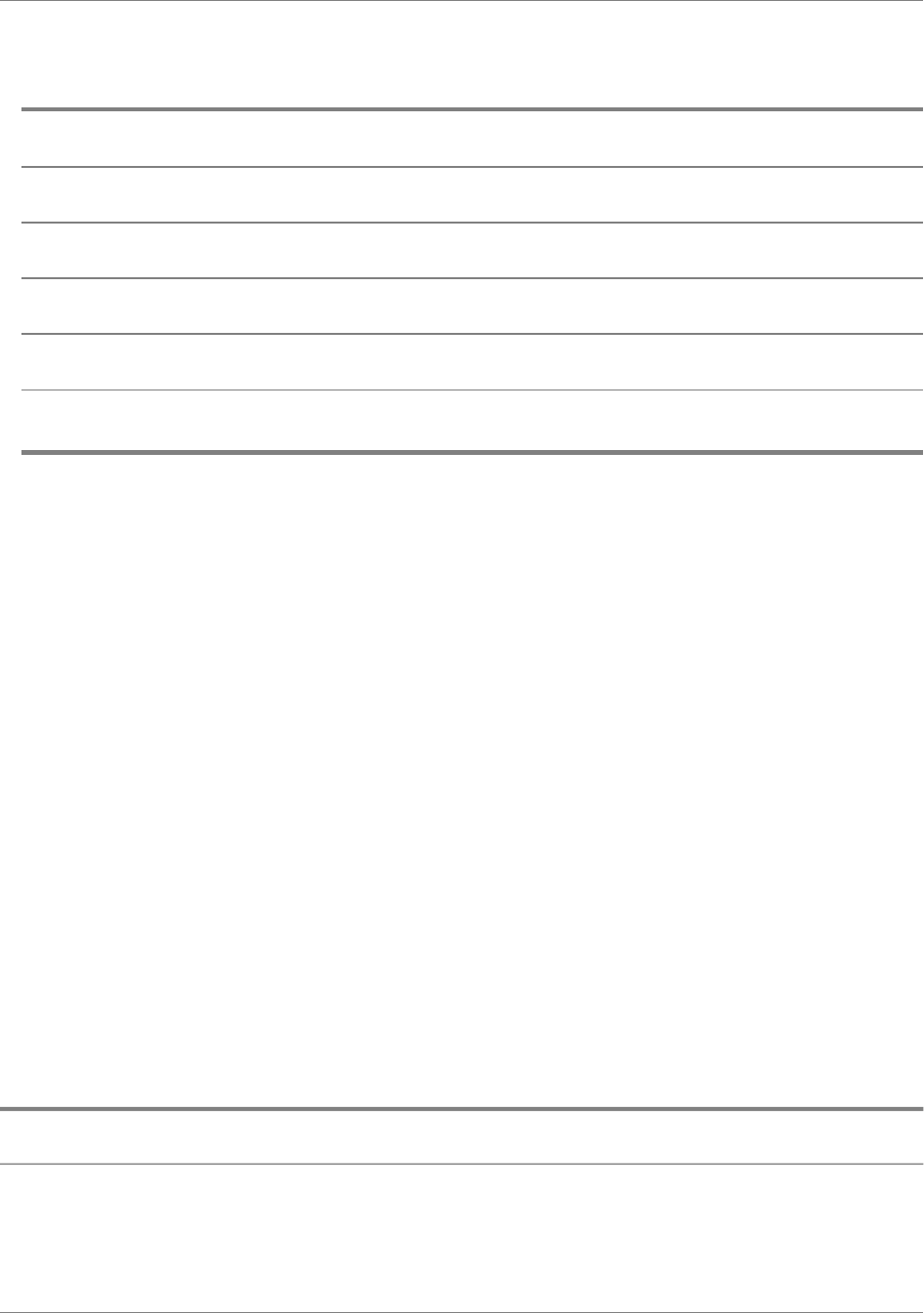
On HoldConfirmed or On HoldConfirmed
Service ordersProjects (TP)Sales orders
Service callsService contractsSales schedules
Maintenance sales ordersInterest invoicesInstallments for sales orders
--Commissions
--Rebates
--Freight orders
View invoicing data
You can view transferred but not yet invoiced data in the Billable Lines (cisli8110m000) session. When
invoiced, you can view the data in the Invoice Lines (cisli3110m000) session.
If invoicing lines exist with status On Hold or Confirmed, depending on the invoicing data type, you
can usually change a number of data, including the following:
▪
First Reference
▪
Second Reference
▪
Original Pay-by Business Partner
▪
Invoice-to Address
▪
Invoice Delivery Method
▪
Payment Method
▪
Payment Terms
▪
Late Payment Surcharge
▪
Cut-off Date
If you change any of these fields, the new data only applies to the invoice lines that must still be
processed.
Depending on the invoice status, a number of data can be changed even after composing and printing.
The following table shows which subset of data can be changed.
Ready to Submit, Ready to Print, PrintedPrintedReady to Submit, Ready to Print
▪
Bank Account
▪
Tax Year/Period
▪
Rate Date
22 | Infor LN Invoicing | User Guide for Invoicing
Invoicing Procedure
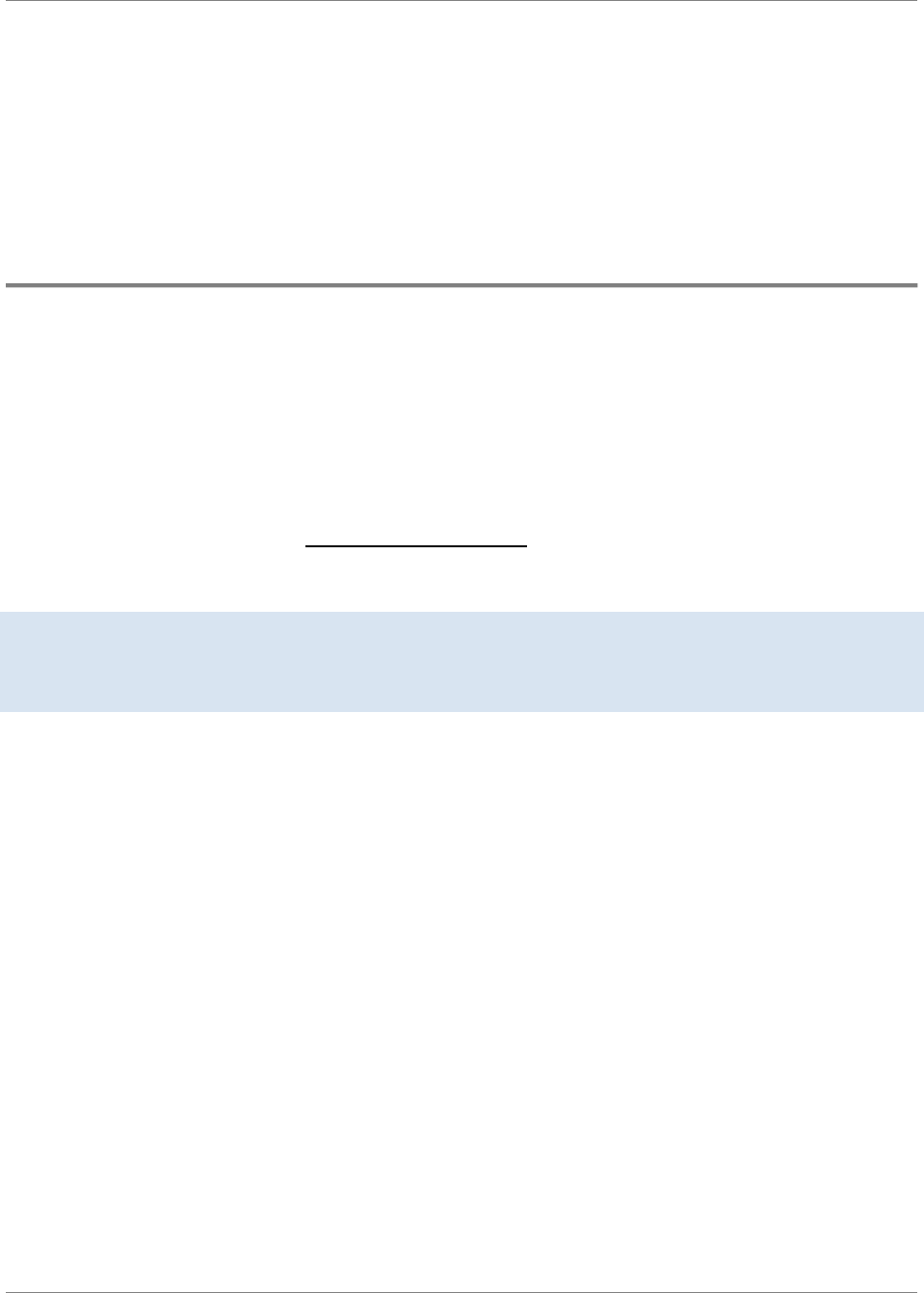
▪
Tax Date
▪▪
Invoice Delivery MethodFiscal Year/Period
▪▪ ▪
Reporting Year/
Period
Settlement Tax Date Based
on
Financial Department
▪
Invoice Layout
▪
Invoice-to Address
▪
Link to Monthly Billing Invoice
▪
Payment Method
▪
Pay-by Address
▪
Sales Type
To use the new data for already composed invoices, you must undo the composition in the
Compose/Print/Post Invoices (cisli2200m000) session. See: Correct invoicing data (p. 23).
Correct invoicing data
If changes to the invoice amounts are required, you can undo the composition of a Ready to Print
invoice in Invoicing. In the related Operations Management package, such as Sales or Service, you can
change the invoice-related data. LN will then update the billable lines (status: On Hold) accordingly,
after which you can reprocess the invoicing data.
Note
You cannot make corrections to invoices for which you use Direct processing of invoices, for example,
debit notes and credit notes.
Step 1: Undo the composition of invoices
In the Invoicing 360 (cisli3600m000) session, select the invoicing batch or the recurring invoicing batch.
Select one of these check boxes:
▪
Undo Compose
If you click Continue, the application performs these actions:
▪
Removes the invoices from Invoicing.
▪
Sets the billable line status to Confirmed.
▪
Sets the invoicing batch status to On Hold.
For example, you can use this function if you want to change the selection ranges of the
invoicing batch, and/or the invoicing options, and then reprocess the invoicing batch.
▪
Undo Compose and Delete
If you click Continue, the application performs these actions:
▪
Removes the generated invoices from Invoicing.
▪
Removes billable lines for Contract Management contracts, Service contracts, interest
invoices, and manual sales invoices from the Billable Lines (cisli8110m000) session.
Infor LN Invoicing | User Guide for Invoicing | 23
Invoicing Procedure

Note: Manual sales invoices are retained in the Manual Sales Invoices (cisli2520m000)
session. However, their status will be reverted to On Hold.
▪
Sets the billable line status of other kinds of orders to On Hold.
▪
Sets the invoicing batch status to On Hold.
Step 2: Correct the selection of invoices
To change the selection ranges of the invoicing batch, and/or the invoicing options:
1. In the Invoicing Batches (cisli2100m000) session, open the invoicing batch and make the
necessary changes.
2. Confirm the billable lines whose status was set to On Hold, for example, using the Global
Confirmation of Billable Lines (cisli2219m000) session.
3. In the Compose/Print/Post Invoices (cisli2200m000) session, reprocess the invoicing batch.
Step 3: Correct the billable lines
To change the billable lines:
1. Change the billable lines in the corresponding Operations Management package.
For kinds of orders other than for Contract Management or Service contract, the billable lines
still exist in Invoicing. You do not need to release the order lines to Invoicing again. If you save
the new data in the appropriate sessions in Contract Management, Sales, Project, or Service,
the application automatically updates the billable lines in Invoicing and sets the status to
Confirmed.
If you performed undo compose and delete for a Contract Management invoice or a Service
contract invoice, the billable lines no longer exist in Invoicing. Change the data in the appropriate
sessions of Contract Management or Service, and then release the data again to Invoicing.
2. If you are authorized to do so, you can change a great number of data in the Billable Lines
(cisli8110m000) session, including the following:
▪
Pay-by Business Partner
▪
Invoice Delivery Method
▪
Delivery Terms
▪
Cut-off Date
▪
Invoicing Method
▪
Report Layout
▪
Payment Terms
▪
Late Payment Surcharge
▪
Payment Method
▪
Tax Code
3. Confirm the billable lines whose status was set to On Hold, for example, using the Global
Confirmation of Billable Lines (cisli2219m000) session.
4. In the Compose/Print/Post Invoices (cisli2200m000) session, reprocess the invoicing batch.
24 | Infor LN Invoicing | User Guide for Invoicing
Invoicing Procedure

Confirm invoicing data
You can only generate invoices from invoicing data that has the Confirmed status.
If the invoicing data has the On Hold status, you can confirm individual lines or ranges of lines.
To confirm individual lines:
1. Access the Invoicing 360 (cisli3600m000) session, or the Billable Lines (cisli8110m000)
session.
2. Select one or more lines that have the On Hold status and, on the appropriate menu, click
Confirm Lines. The line status is set to Confirmed.
To confirm ranges of invoicing data:
1. In the Invoicing 360 (cisli3600m000) session, click Confirm Lines.
2. In the Global Confirmation of Billable Lines (cisli2219m000) session, select the check boxes
for the types of invoicing data that you want to confirm, and specify selection ranges.
3. Click Confirm. The line status is set to Confirmed.
Note
If workflow is implemented, a billable line will receive status Confirmed only after approval through the
workflow process.
Create an invoicing batch
In the Invoicing Batches (cisli2100m000) session, create an invoicing batch. You must select an invoicing
batch template and invoicing options for the invoicing batch.
Specify selection ranges for the invoicing data that you want to process.
Only the lines of the selected invoicing data that have the Confirmed status will be processed.
Process the invoicing batch
To process the invoicing batch, start the Compose/Print/Post Invoices (cisli2200m000) session. You
can process individual invoicing batches or process multiple invoicing batches in a recurring invoicing
batch. See: Job processing of invoices (p. 33).
In the Compose/Print/Post Invoices (cisli2200m000) session, select the check boxes to indicate the
process. To perform the complete invoicing process, for example, in a batch job, select all three check
boxes.
Infor LN Invoicing | User Guide for Invoicing | 25
Invoicing Procedure

You can select these processes:
▪
Compose
LN generates invoices from the selected invoicing data. The invoicing data lines are grouped
on the invoices according to the relevant composing criteria. See: Selecting order data for
invoicing (p. 27). The invoicing data lines status is set to Ready to Print and the invoicing
batch status is set to Composed. The invoice receives a temporary invoice sequence number.
LN retrieves the address for the invoices from the invoice-to business partner details.
▪
To check the invoices, you can print draft invoices or you can view the composed invoices in
the Invoices (cisli2505m100) session. If corrections to the invoicing data or to the printed
invoices are required, you can undo the composition of the invoices. See: Correct invoicing
data (p. 23).
▪
Print
▪
Draft
LN prints draft invoices that you can check. The draft invoice shows the temporary invoice
sequence number. The invoicing data lines status remains Ready to Print and the invoicing
batch status remains Composed.
▪
Original
LN prints the final invoices that you can send to the business partners. To perform the
entire invoicing process, select this check box.
In the Number of Extra Invoice Copies field of the Invoice-to Business Partner
(tccom4112s000) session, you can specify the number of copies of the invoice in addition
to the original invoice, that you want to print.
The status of the invoicing data lines, the invoicing batch, and the invoices is set to Printed.
LN generates the invoice document numbers from the applicable transaction types and
series.
In the Printing Sequence field, you can select a printing sequence for the invoices. By
default, the invoices are sorted by invoice delivery method.
If you use grand total rounding, LN rounds the total sales invoice amount, which includes
the tax amount and rebate amounts. The actual total invoice amount and the rounded
invoice amount are both printed on the invoice.
If payment schedules are linked to the invoice, LN prints the payment schedule lines and
the payment methods on the invoices.
▪
Posting
When posting the invoices to Financials, LN performs these actions:
▪
Creates open entries in Accounts Receivable.
▪
Creates non-finalized integration transactions according to the integration mapping scheme.
See: Financial integrations - overview.
▪
Creates non-finalization transactions in Financials.
▪
Returns the invoice information, for example, the invoice document number and date to
Operations Management.
▪
Sets the status of the invoicing data lines, the invoicing batch, and the invoices to Posted.
26 | Infor LN Invoicing | User Guide for Invoicing
Invoicing Procedure

Printing and posting the invoices separately
If you do not perform the entire process in the Compose/Print/Post Invoices (cisli2200m000) session,
you can use these sessions to print and post the invoices separately:
▪
Print Invoices (cisli2400m000)
▪
Post Invoices (cisli3200m000)
Reprint printed and posted invoices
If you have printed the final invoices, you can not print the invoices again in the Compose/Print/Post
Invoices (cisli2200m000) or the Print Invoices (cisli2400m000) session.
To reprint invoices or ranges of invoices that have the Printed or Posted status:
1. In the Invoices (cisli2505m100) session, select or display an invoice.
2. On the File menu, point to Print and on the submenu, click Reprint Invoices. The Reprint
Invoices (cisli2405m000) session starts.
3. Specify the selection criteria for the invoices that you want to reprint. You can also reprint the
invoice in a different language.
Continue with: Removing invoicing data (p. 45)
Selecting order data for invoicing
You must create an invoicing batch to create selections of invoicing data for which the application
generates invoices.
If you create a new invoicing batch in the Invoicing Batches (cisli2100m000) session, you must select
an invoicing batch template for the invoicing batch. The invoicing batch template determines the types
and number of invoice data lines you can select for the invoicing batch.
Note
A template must exactly define the number and types of orders for which you want to create invoices in
an invoicing batch. In the invoicing batch, you cannot ignore the selections defined in the invoicing batch
template. For all kinds of orders for which the template defines that you can select Several, the full range
of invoicing data is selected in the invoicing batch by default. You can specify a smaller range in the
invoicing batch. However, you cannot select None.
For example, to create only interest invoices, the invoicing batch template must have value None for all
other types of orders.
If you compose the invoices for the data selected through the invoicing batch, the application can either
generate a separate invoice for each invoice data line, or combine invoice data on the invoices.
Infor LN Invoicing | User Guide for Invoicing | 27
Invoicing Procedure

Whether the invoice data is grouped on one invoice depends on these criteria and parameters:
▪
Transaction type and series
The transaction type and series used for the invoice document number. Orders for which the
invoice document numbers are generated with different transaction types or series cannot be
grouped on one invoice.
▪
In the Invoicing Transaction Types (cisli0101m000) session, for every kind of order, you
can specify the default transaction type and series for the invoice document number. In
this way, you can set up the default way to group the invoice lines per invoice. To group
invoices of different kind of orders on one invoice, specify the same transaction type and
series for the kind of orders.
Within a specific source type, grouping is done based on the regular transaction type: if
the final invoice is a credit note, the credit note transaction type of that source type is used.
However, if you group different source types on the invoice (based on the invoicing method
and setting the same transaction type for the source types), you must set the credit note
transaction type to the same value for these source types.
▪
If the invoicing batch selection includes order invoices and related credit notes for return
orders, the application first settles the order invoices with the credit notes, and then
generates a sales invoice for the remaining amount. The operational company, invoice
transaction type and invoice number of the order invoice must be available in Invoicing.
▪
In the Invoicing Options (cisli1120s000) session, you can specify that you can overwrite
the transaction type when you create an invoicing batch. You can use this feature to
overrule the way in which the invoice lines are grouped by default.
▪
Composing criteria
Invoice lines can only be grouped on one invoice if the composing criteria have the same
values. For example, invoice lines for different invoice-to business partners cannot be grouped
on one invoice. For a list of the predefined composing criteria, refer to Composing criteria
(p. 29).
▪
Invoicing method
The invoicing method defines whether various orders and kind of orders can be grouped on
one invoice. You specify invoicing methods in the Invoicing Methods (tcmcs0155s000) session,
and then link the methods to the business partner in the Invoice-to Business Partner
(tccom4112s000) session.
▪
Invoicing batch template
The invoicing batch template controls the number and type of orders that you can select for
invoicing in an invoicing batch. If the invoicing batch template and the applicable invoicing
method allow different types of grouping, the application applies the most restricted grouping.
Overwriting the transaction types and series
If the invoicing batch template permits, you can specify a transaction type and series in the Invoicing
Batches (cisli2100m000) session that will be used to generate the document numbers, instead of the
transaction type and series defined for invoice and credit note invoices in the Invoicing Transaction
Types (cisli0101m000) session.
28 | Infor LN Invoicing | User Guide for Invoicing
Invoicing Procedure

You can use this feature for two purposes:
▪
If the invoicing batch template allows you to select multiple kinds of orders for which you
defined different default transaction types and series, and you want to collect the orders on
one invoice.
▪
If you create invoicing batches for a recurring invoicing batch, the invoicing batch template
allows you to select one kind of order, and you want to distinguish the invoices created, for
example, by various departments. For details, refer to Job processing of invoices (p. 33).
Creating separate invoices for each kind of order
Various types of invoices exist, for example, sales invoices, project invoices, and service invoices. To
invoice each kind of order separately, you can do any or all of the following:
▪
In the Invoicing Methods (tcmcs0155s000) session, create separate invoicing methods for
each type of order.
▪
In the Invoicing Transaction Types (cisli0101m000) session, specify different transaction types
and/or series for the various kinds of orders.
▪
Create invoicing batch templates that each select a single invoicing data type.
Composing criteria
Composing criteria define whether invoice lines can be grouped on an invoice. For example, invoice
lines with different invoice-to addresses or different invoice currencies cannot be grouped on one invoice.
In addition, to support dimension accounting, invoice lines that must be posted to different dimensions
cannot be grouped on one invoice.
Two types of composing criteria exist:
▪
Fixed general criteria
Predefined general composing criteria that always apply to all types of invoices.
▪
Specific criteria
Specific criteria that apply to specific types of invoicing data. For example, a composing criterion
for project invoices can be the project, and for service invoices, the service contract. You can
define the composing criteria for various types of invoices in the invoicing method that you
define in the Invoicing Methods (tcmcs0155s000) session.
Note
▪
If you use monthly billing invoices and you selected the Receipts Against Shipments check
box in the CMG Parameters (tfcmg0100s000) session, sales and warehouse order invoice
lines cannot be composed on an invoice. LN generates a separate invoice for every shipment.
For more information, refer to Monthly billing invoices.
Infor LN Invoicing | User Guide for Invoicing | 29
Invoicing Procedure

▪
For credit notes, the Operational Company is an important criterion. The operational company
is the financial company in which the original invoice was created. LN can only compose credit
notes with invoices that have the same operational company.
Fixed general criteria
▪
Financial Company
▪
Dimensions
▪
Transaction Type
▪
Operational Company
▪
Sold-to Business Partner
▪
Invoice-to Business Partner
▪
Invoicing Method
▪
Pay-by Business Partner
▪
Ship-to Business Partner
▪
Ship-to Address
▪
Invoice-to Address
▪
Pay-by Address
▪
Invoice Currency
▪
Payment Terms
▪
Late Payment Surcharge
▪
Invoice Delivery Method
▪
Payment Method
▪
Tax Country
▪
Business Partner Tax Country
▪
Rate Determiner
▪
Report Layout
▪
The Link to Monthly Billing Invoice option of the sales invoice.
Sending sales invoices through EDI
To send sales invoices through electronic data interchange (EDI), use the Outgoing Messages by Session
(ecedi0115m000) session to create a link between Electronic Commerce and Invoicing.
You can link these sessions to EDI:
▪
Compose/Print/Post Invoices (cisli2200m000)
▪
Print Invoices (cisli2400m000)
If the business partner supports the sales invoice message, you can automatically send EDI messages
by printing an invoice.
30 | Infor LN Invoicing | User Guide for Invoicing
Invoicing Procedure

Example
cisli2200m000Session
DescriptionEDI MessageDescriptionOrganization
X12 Sales Invoic-
es
810ANSI X12X12
Infor LN Invoicing | User Guide for Invoicing | 31
Invoicing Procedure

32 | Infor LN Invoicing | User Guide for Invoicing
Invoicing Procedure

Before you start using mass invoicing, please refer to the setup requirements as described in Setting
up mass invoicing (p. 14).
Use the Mass Invoicing Workbench (cisli3620m000) session to view all invoices and billable lines that
have been processed at a specific processing date. For each status, this session summarizes the
numbers of invoicing batches, invoices, and exceptions. It also allows you to filter and to browse easily
to earlier or later dates.
Because recurring invoice batches can be large, you can handle exceptions by taking care of the invoices
that have not been completed successfully. For example, because the financial period in the General
Ledger was not open.
Also in this session, you can set up recurring invoicing batches, define jobs, and view job history.
Job processing of invoices
To process invoices in a batch job, you must use recurring invoicing batches. Typically, you would define
recurring invoicing batches to process similar selections of invoicing data regularly without the need to
create a new invoicing batch every time.
Example: daily processing of invoices related to sales orders.
To set up job processing of invoices:
1. In the Global Confirmation of Billable Lines (cisli2219m000) session, select the order type or
types that you want to process automatically.
2. Click Add to Job to create a job that automatically confirms the invoicing data at the required
time interval.
3. Create an invoicing batch template for the order type and set the number of orders to Several.
4. Define the invoice layout in invoicing batch options.
5. Create an invoicing batch to select the invoicing data.
6. Create a recurring invoicing batch.
Infor LN Invoicing | User Guide for Invoicing | 33
4
Chapter 4
Mass Invoicing

7. Add the invoicing batch to the recurring invoicing batch. You can add multiple invoicing batches
to a recurring invoicing batch.
8. In the Compose/Print/Post Invoices (cisli2200m000) session, specify these details:
a. Select the recurring invoicing batch in the Recurring Invoicing Batch field.
b. Select the Compose, Print, and Post check boxes.
c. Leave the current date and time in the Cut-off Date field.
d. Click Add to Job to create a job that processes the recurring invoicing batch at the required
time interval.
Leave a time interval of, for example, 30 minutes, between the job that confirms the
invoicing data and the job that processes the invoicing batches. For more information,
refer to Using jobs.
To create a recurring invoicing batch:
1. In the Recurring Invoicing Batches (cisli1106m000) session, create a recurring invoicing batch.
2. Select the recurring invoicing batch and on the appropriate menu, click Invoicing Batches.
The Recurring Invoicing Batch - Invoicing Batches (cisli1107m000) session starts.
3. To add invoicing batches to the recurring invoicing batch, click New. In the Invoicing Batch
field, click the browse arrow to select an invoicing batch in the Invoicing Batches
(cisli2100m000) session.
4. Save the data and close the Recurring Invoicing Batch - Invoicing Batches (cisli1107m000)
session.
5. In the Recurring Invoicing Batches (cisli1106m000) session, save the data.
To process a recurring invoicing batch:
1. In the Recurring Invoicing Batches (cisli1106m000) session, select the recurring invoicing
batch.
2. On the appropriate menu, click Process. The Compose/Print/Post Invoices (cisli2200m000)
session starts. The recurring invoicing batch is already selected.
3. In the Compose/Print/Post Invoices (cisli2200m000) session, enter the required data in the
remaining fields.
4. Click Continue to process the invoicing batches of the recurring invoicing batch.
34 | Infor LN Invoicing | User Guide for Invoicing
Mass Invoicing

Before you start using ad hoc invoicing, please refer to the setup requirements as described in Setting
up ad hoc invoicing (p. 15).
Use the Invoicing 360 (cisli3600m000) session to view the overall status of all billable lines and invoices,
and a summary of the related amounts. In addition to this, you can use this session for manual invoicing.
Manual sales invoices
To create invoices for which no related sales order or other type of order exists, for example, the disposal
of a fixed asset, you can create a manual sales invoice.
To create a manual sales invoice:
1. In the Invoicing 360 (cisli3600m000) session, on the appropriate menu, click Create Manual
Sales Invoice. The Manual Sales Invoice (cisli2620m000) session starts.
2. On the Common and Financial tabs, specify the data required to create the manual sales
invoice header.
3. To create the invoice lines, on the Lines tab, click New.
4. Specify the invoice data.
5. if you wish, you can click the Text button to add a detail text to the invoice line. For details,
refer to Printing texts on invoices (p. 17).
6. Save the data in the Manual Sales Invoice (cisli2620m000) session.
The newly created manual sales invoice has the On Hold status.
Infor LN Invoicing | User Guide for Invoicing | 35
5
Chapter 5
Ad Hoc Invoicing

To process manual sales invoices:
▪
Direct processing
To directly process a manual sales invoice, you must have specified default invoicing batch
templates and invoicing options in the Invoicing Parameters (cisli0100m000) session.
a. In the Manual Sales Invoices (cisli2520m000) session, select the invoices that you wish
to process.
b. From the appropriate menu, select Direct Processing.
Without asking for confirmation, LN automatically processes the invoice. LN performs
these actions:
▪
Changes the status to Confirmed.
▪
Composes the invoice.
▪
Prints the invoice according to default template addition for manual sales, to the device
defined for direct processing in the Invoicing Parameters (cisli0100m000) session.
▪
Posts the invoice amounts.
▪
Changes the status to Posted.
▪
Manual processing
To manually process a manual sales invoice:
a. The newly created manual sales invoice has the On Hold status. To change the status to
Confirmed, do either of the following:
▪
In the Global Confirmation of Billable Lines (cisli2219m000) session, select the Manual
Sales Invoices check box, and then click Confirm. LN changes the status of all manual
invoices that have the On Hold status to Confirmed.
▪
In the Manual Sales Invoice Lines (cisli2125m000) overview session, select the
invoicing data line and from the appropriate menu, click Confirm.
b.
Create and process an invoicing batch for the manual sales invoice as described in Invoicing
procedure (p. 21).
Disposal of fixed assets
To create and process a manual sales invoice for disposed fixed assets:
1. In the Invoicing Parameters (cisli0100m000) session, specify the default Asset Disposal
account and dimensions.
Specify a ledger account of which the Fixed Asset Integration field in the Chart of Accounts
(tfgld0508m000) session is Disposal.
2. In the Manual Sales Invoice Lines (cisli2125m000) session, select the Asset Disposal check
box., and then select the asset.
LN uses the default Asset Disposal account from the Invoicing Parameters (cisli0100m000)
session.
3. Post the invoice.
36 | Infor LN Invoicing | User Guide for Invoicing
Ad Hoc Invoicing

LN generates a batch.
4. To set the asset status to Disposed, finalize the batch in Financials.
Infor LN Invoicing | User Guide for Invoicing | 37
Ad Hoc Invoicing

38 | Infor LN Invoicing | User Guide for Invoicing
Ad Hoc Invoicing

Before you start using self-billed invoicing, please refer to the setup requirements as described in Setting
up self-billed invoicing (p. 15).
Use the Self-Billing Workbench (cisli5620m000) session to view the summary of all the self-billed invoices
that are processed. In this exception-based session, you can focus on self-billed invoice lines that did
not match automatically, and take the required actions to make them match.
Self-billed invoice matching
Self-billed invoices can be automatically matched based on:
▪
Fixed criteria
These fields are fixed matching criteria:
▪
Invoice-to Business Partner
▪
Currency
▪
Unit Delivered Quantity
▪
Tax Country
▪
Tax Code
Note: Only billable lines that have status Confirmed and for which the Receive Invoice check
box was selected, will be considered for matching.
▪
Optional criteria
These fields are optional matching criteria:
▪
Sales Order
▪
Customer Order Number
▪
Shipment
▪
Shipment Line
▪
Packing Slip
▪
Packing Slip External
▪
Item
▪
VAT Number Customer
▪
Shipment Reference
Infor LN Invoicing | User Guide for Invoicing | 39
6
Chapter 6
Self-Billed Invoicing
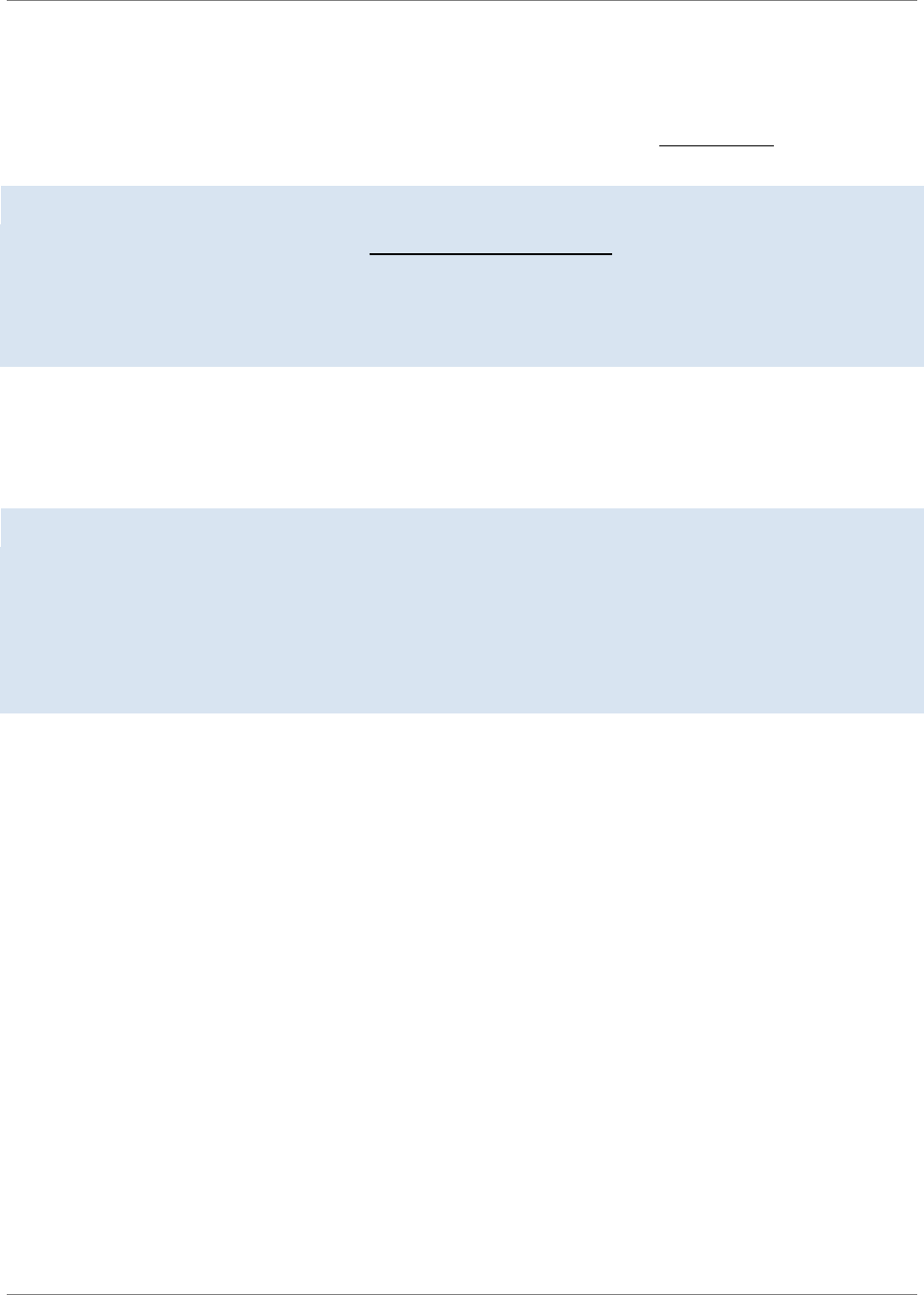
▪
Ship-to Address
▪
Delivery Point
To include or exclude (optional) fields for field matching, access the Match Codes
(tcmcs0158m000) session, which allows you to create multiple match codes that can be
assigned to the various invoice-to business partners.
Note
▪
For each match, identified by a matched SBI relations code, LN creates a line in the Self-Billed
Invoice Line Relations (cisli5110m000) session. This session allows authorized users to
approve rejected matches or to cancel successful matches.
▪
To manually match self-billed invoices, use the Match Self-Billed Invoices (cisli5200m000)
session or the Self-Billed Invoices (cisli5100m000) session.
Approve matched self-billed invoices
After self-billed invoices have been matched, they must be approved. To manually approve a range
self-billed invoices, use the Approve Matched Self-Billed Invoices (cisli5210m000) session.
Note
▪
Even if, in the Invoicing Parameters (cisli0100m000) session, in addition to the Automatic
Match Self-Billed Invoice check box, Automatic Approve Self-Billed Invoice is selected,
the approval step applies for those matches that were initially rejected by LN but later on
accepted by an authorized user.
▪
Matched self-billed invoices can only be approved by users who are listed in the Self-Billing
Approve Authorizations (cisli0120m000) session.
40 | Infor LN Invoicing | User Guide for Invoicing
Self-Billed Invoicing

In addition to specifying default settings for output devices and print options, the Invoicing User Profiles
(cisli0110m000) session allows you to specify whether a user is authorized to make changes to invoicing
data, that is, to billable lines with status On Hold.
Invoicing statuses
Invoicing Status
▪
On Hold
▪
Billable lines
The invoicing data cannot be selected for invoicing. You must confirm the invoicing data
before you can generate the invoices.
▪
Invoices
The status of the original invoice when an invoice with status Posted is reversed using
the Credit and Rebill command in either of the Invoice (cisli3605m000) and Invoices
(cisli3105m000) sessions.
Note
▪
If ION Workflow is implemented, the On Hold status applies to all transferred billable lines
with negative amounts.
▪
An invoicing batch with On Hold status can be processed in the Compose/Print/Post
Invoices (cisli2200m000) session. For more information, refer to Invoicing batch status
(p. 43).
▪
Canceled
The invoicing data line has been canceled. If you undo the cancellation, the invoicing data
status is set to On Hold.
▪
Confirmed
The invoicing data can be selected for invoicing when you process an invoicing batch in the
Compose/Print/Post Invoices (cisli2200m000) session.
Infor LN Invoicing | User Guide for Invoicing | 41
7
Chapter 7
Invoicing Data Maintenance

Note
If ION Workflow is implemented, a billable line will receive status Confirmed only after approval
through the workflow process.
▪
Ready to Submit
Applicable if ION Workflow is implemented.
This status matches the Ready to Print status, except that the invoice must first be approved.
You can print a draft invoice to check the invoice. If the draft invoice is not correct, you can
undo the composition of the invoice. The invoicing data status is then reset to Confirmed.
▪
Pending Approval
Applicable if ION Workflow is implemented.
This status indicates that the invoice has been submitted for approval. As a result, the invoice
can no longer be changed.
An invoice with status Pending Approval is excluded from any processing in Invoicing.
▪
Ready to Print
The invoice is ready for printing. LN has generated a temporary sequence number to identify
the invoice. You can change the invoice date to the current date or to another date in the past,
as required. The invoice will then be recalculated.
You can print a draft invoice to check the invoice or you can print an original invoice and send
it to the invoice-to business partner. If the draft invoice is not correct, you can undo the
composition of the invoice. The invoicing data status is then reset to Confirmed.
▪
Printed
An original invoice has been printed that you can send to the customer. LN has replaced the
temporary invoice sequence number with the original invoice document number.
The invoice is final and you must post the invoice. You cannot undo the composition and
change the invoicing data. You can reprint the original invoice if this is necessary.
Note
For tax invoices, the invoice number assigned during composing is also the final invoice
number.
▪
Posted
The invoice has been sent to the customer and posted to Financials. An open entry has been
created in Accounts Receivable.
If required, you can reprint the original invoice, or you can use the Archive and Delete Invoice
Data (cisli3210m000) session to remove the invoice data from Invoicing.
Note
The Posted status does not apply to billable lines, because these are removed when the
related invoice is posted.
42 | Infor LN Invoicing | User Guide for Invoicing
Invoicing Data Maintenance

Invoicing Batch Status
▪
On Hold
You can process or reprocess the invoicing batch in the Compose/Print/Post Invoices
(cisli2200m000) session.
Before you process or reprocess the invoicing batch, you can perform these actions:
▪
Modify the invoicing data of the selected orders.
▪
Change the selection ranges, in the Invoicing Batches (cisli2100m000) session.
▪
Link a different invoicing batch template to the invoicing batch, and then specify new
selection ranges in the Invoicing Batches (cisli2100m000) session.
Note
Invoicing data with the On Hold status cannot be selected for invoicing. You must confirm the
invoicing data before you can generate the invoices.
▪
In Process
The invoicing batch is currently processed. You cannot make any changes to the invoicing
batches.
If the composing process is interrupted as a result of an error, the invoicing batch and related
invoices have this status. Solve the problem and restart the process. LN automatically continues
with the unprocessed invoicing batches and invoices.
▪
Composed
The invoices have been composed. LN has generated temporary sequence numbers to identify
the invoices.
You can print draft invoices to check the invoice, or you can print the original invoices and
send them to the invoice-to business partners. If the draft invoice is not correct, you can undo
the composition of the invoicing batch. The invoicing data status and the invoicing batch status
are then set to On Hold.
▪
Printed
The original invoices, which you can send to the customer, have been printed. LN has replaced
the temporary invoice sequence numbers with the original invoice document numbers.
The invoices are final and you must post the invoices. You can reprint the original invoices, if
required. You cannot undo the composition and change the invoicing data.
▪
Posted
The invoices have been sent to the customer and posted to Financials. Open entries have
been created in Accounts Receivable. If required, you can reprint the original invoices, or you
can use the Archive and Delete Invoice Data (cisli3210m000) session to remove the invoice
data from Invoicing.
Credit and Rebill
To create a replacement invoice, use this command.
Infor LN Invoicing | User Guide for Invoicing | 43
Invoicing Data Maintenance

The entire invoice is reversed, for which the following billable lines are generated:
▪
For each invoice, a credit note, which is automatically processed.
▪
For each invoice line, a new billable line.
Note
This command is only available if these conditions are met:
▪
The invoice status is Posted.
▪
The invoice has not yet been paid.
▪
The invoice is not related to installments or advanced receipt requests.
▪
The invoice is not a self-billing invoice.
▪
The invoice is not an internal invoice.
▪
The invoicing scenario of the original invoice is All Scenarios.
▪
The source type is not any of the following:
▪
Customer Claim
▪
Rebate
▪
Debit/Credit Note
▪
Purchase Order
▪
PCS Order
▪
Warehouse Order
▪
The document type is not any of the following:
▪
Advance Receipt Request
▪
Pay-from Receipt
▪
Credit Note
▪
None of the invoice lines is related to an Interest Invoice.
▪
The source order is not yet closed:
▪
For contracts, the project may not yet be closed.
▪
For Sales, the sales order may not yet be processed (process delivered orders).
▪
For Service, the service order may not yet be closed.
▪
The period in which the invoice date of the original invoice occurs, is still open.
▪
You are authorized to make changes.
( Allow Change Invoicing Data selected in the Invoicing User Profiles (cisli0110m000)
session.)
44 | Infor LN Invoicing | User Guide for Invoicing
Invoicing Data Maintenance

To log sales listing data that is missing from tccom700 (Sales Listing Data) table, use the Generate
Sales Listing (cisli2280m000) session.
If you use a tax provider, you can use the Update Tax Registers (cisli2290m000) session to update the
tax registers in the tax provider interface with the tax data of the selected invoices.
Removing invoicing data
Use the Archive and Delete Invoice Data (cisli3210m000) session to remove this data for a range of
invoices or invoicing batches:
▪
Fully paid invoices, related invoicing data and invoicing batches
▪
Canceled invoice lines
The normal invoicing process will automatically remove all billable data except for interest invoices,
manual sales invoices, and debit/credit notes.
You can archive the data to the archive company of the current financial company.
To remove invoicing batches or posted invoices from the Invoicing tables, use the Clear Obsolete Invoice
Tables (cisli9205m000) session.
Infor LN Invoicing | User Guide for Invoicing | 45
8
Chapter 8
Invoicing Utilities

46 | Infor LN Invoicing | User Guide for Invoicing
Invoicing Utilities

Tax date
For all invoicing origins, the following tax date options apply:
▪
Invoice Date
▪
Order Date
▪
Delivery Date
If no delivery date is specified, the invoice date is used. Example: Installment Invoice. In case of multiple
delivery dates, the first delivery date is used as tax date.
If you change the tax date after composing, tax details as well as year and period will be recalculated.
For correction invoices (return orders, credit notes, etc.), the tax dates of the original invoices are used.
Generating the intracommunity listing
To generate the intracommunity listing:
Step 1:
From the appropriate menu in the Invoice-to Business Partner Open Entries (tfacr2520m000) session
in Financials, start the Sales Listing Data (tfacr1113s000) session to transfer the open invoice data to
the sales listing.
Step 2:
Optionally, use the Sales Listing (tccom7570m000) session to:
▪
Display the reported amounts by invoice, date, business partner, and transaction type.
▪
Specify or correct invoices that must be included in the sales listing but are not recorded, or
are recorded incorrectly, in Invoicing.
▪
Select the Subcontracting check box, where this is required.
Infor LN Invoicing | User Guide for Invoicing | 47
9
Chapter 9
Taxation

Step 3:
Use the Process Intracommunity Listing (tccom7270m000) session to generate the sales listing. You
can optionally generate a partial sales listing. You can create:
▪
An XML file for automatic transfer
▪
A sequential comma-separated file
▪
A printed report
Subcontracting indicator
LN cannot set the subcontracting indicator that is required for the sales listing, on the invoices. You must
do this yourself in the Sales Listing (tccom7170s000) session.
Generating the next intracommunity listing
You can generate the next intracommunity listing in two ways:
▪
In the Process Intracommunity Listing (tccom7270m000) session, clear the Including
Processed Lines check box. LN includes only the invoices that have not yet been processed
in the sales listing.
▪
Specify the declaration period in the Process Intracommunity Listing (tccom7270m000) session
to generate the sales listing of a specific period.
If you specify a period for which you already generated the sales listing, LN automatically
generates correction entries for that period. You can only generate corrections for the most
recent period for which you generate the sales listing. LN does not retain the sales listing
details of older periods.
Updating the sales listing
If applicable, use the Update Deductions in Sales Listing (tctax7200m000) session to update discount,
late payment surcharge, or payment differences (subtracted on payment of an invoice) in the sales
listing.
North American expense purchase tax
In North America, specific rules apply to the posting of tax on purchase invoices.
To set up expense purchase tax handling:
1. In the Tax Codes by Country (tcmcs0136s000) session, select the Expense Purchase Tax
check box.
2. In the ACP Parameters (tfacp0100m000) session, select the North American Purchase
Expense Tax check box and select a tax variance account and dimensions.
48 | Infor LN Invoicing | User Guide for Invoicing
Taxation

If you set up North American expense purchase tax handling, purchase invoices with an expense
purchase tax code are handled as follows:
1. The expense tax code of the invoice is replaced with the expense tax code of the order.
2. During approval of the purchase invoice, the tax amount of the invoice is reversed and posted
in the approval document.
3. The tax of each matched order line is handled and posted in the approval document.
4. Any difference between the total tax amount on the invoice, which was reversed, and the sum
of the tax amounts on the matched order lines is posted to the Tax Variance Account that
you select in the ACP Parameters (tfacp0100m000) session.
The tax variance account is an interim account that is reversed if you process the inventory
variances in Warehousing.
Using a tax provider
Use the tax-handling sessions to implement the interface between LN and a tax provider. For Sales and
Use Tax, Vertex O Series is supported.
The tax provider calculates the tax amounts and provides tax registers for auditing and tax reporting of
transactions with addresses in the countries that belong to the country set that you specify in the Country
Set (tccom1680m000) session.
When you generate the final invoices in Invoicing, the tax provider tax register is updated automatically.
The tax amounts are calculated per invoice line rather than per invoice. In addition, the tax provider
calculates the tax amounts for invoices created manually in the Manual Sales Invoice Data (cisli2120s000)
session.
If you activate the tax-provider interface, the following LN functionality is not applied to those transactions:
▪
Tax exemption processing
▪
Multilevel tax processing
▪
Tax-rate selection and tax calculation
These functions are carried out by the tax provider. For transactions with addresses in countries other
than the countries specified in the country set selected in the Tax Provider Parameters (tctax6100m000)
session, tax is calculated in the normal way.
To start using a tax provider
If you already use the application, you can start using a tax provider:
▪
At month end after closing your financial period
▪
Before processing begins for the current period
However, we recommend that you start using a tax provider at quarter end to facilitate tax reporting.
Infor LN Invoicing | User Guide for Invoicing | 49
Taxation

Note
If you cannot start using the tax provider at quarter end, you must consult the following tax registers
when you file your quarterly reports:
▪
LN tax registers
▪
Tax-provider tax registers
Setting up the tax-provider interface
After the tax provider is installed on the application server, you must set up the interface between the
application and the tax provider.
To set up a tax provider:
1. Prepare the tax-provider interface implementation.
2. Implement the tax-provider interface.
3. Adjust the tax-provider interface setup.
Step 1: Preparing the tax-provider interface implementation
To prepare the tax-provider interface implementation:
1. Use the Country Set (tccom1680m000) session to specify a country set for the countries for
which the tax provider must calculate the tax amounts and keep a sales-tax register. For orders
with addresses in other countries, LN calculates the tax amounts.
2. Verify that existing addresses in the countries specified in step 1, have the format that is
required by the tax provider. The city, state/province, and ZIP/Postal code for US and Canadian
addresses must be specified in the correct address fields.
3. Install the tax provider using the instructions provided by the tax-provider vendor.
4. Close the fiscal period using the Close Periods (tfgld1206m000) session.
Step 2: Implementing the tax-provider interface
To implement the tax provider interface:
1. Select the Use Tax Provider check box in the Tax Provider Parameters (tctax6100m000)
session.
2. Select the tax provider in the Tax Provider Parameters (tctax6100m000) session. The tax
provider must be Vertex O Series for Sales and Use Tax.
3. Specify the countries to which the tax provider applies, in the Country Set (tccom1680m000)
session. If the business partner's address is located in one of these countries, LN does not
calculate the tax amounts but passes the tax data on to the tax provider. For addresses in
other countries, LN calculates the tax amounts.
50 | Infor LN Invoicing | User Guide for Invoicing
Taxation

4. Verify and assign GEO codes to existing address data by using the Address Jurisdiction
Verification Utility (tctax6210m000) session.
5. Evaluate the GEO codes and redefine the codes if necessary.
▪
If you use Vertex, perhaps you need to change the default selection of the Inside City
Limits check box in the Addresses (tccom4130s000) session.
▪
If more than one jurisdiction corresponds with the address data, on the appropriate menu
select Jurisdiction to start the GEO Codes by Address Data (tctax6105m000) session.
6. Enter your company, business partners, and product-related data in the tax provider.
7. Define the valid product categories in the Product Categories (tctax6101m000) session. The
product categories that you define must match the taxability drivers defined in the tax provider.
8. Specify the matrix of item groups, items, contract types, service types, and ledger account
numbers by product category, in the Product Category Tax Matrix (tctax6102m000) session.
Step 3: Adjusting the tax-provider interface setup
After you have implemented the tax-provider interface, consider making these adjustments:
▪
Simplify the tax-code structure.
▪
Use separate tax codes for financial transactions.
Simplify the tax-code structure
If you have already used LN without a tax provider, consider to perform a reevaluation of your current
tax structure in Financials. The tax provider does not require the complex tax handling implemented in
LN for non-tax-provider users.
If you use a tax provider, LN uses the tax codes to determine the ledger accounts to which the various
amounts are posted. LN sets all tax codes to singular tax during implementation of the tax-provider
interface. The tax provider determines the tax rates and the jurisdictions.
Use separate tax codes for financial transactions
You must enter the tax amounts of financial transactions manually in the tax provider prior to filing your
quarterly reports. This is because the tax amounts of financial transactions are not written to the
tax-provider tax register. Use the Tax Provider Calculation Utility (tctax6212m000) session to enter these
tax amounts. You can define separate tax codes for financial transactions to facilitate tracking of the tax
amounts of financial transactions.
Infor LN Invoicing | User Guide for Invoicing | 51
Taxation

Stamp tax
Stamp tax is a type of tax that is imposed on trade notes, and consists of a fixed amount instead of a
percentage. Depending on the country of your company, if you issue trade notes you can be obliged to
pay stamp tax on the trade note.
In some countries, such as Spain and Japan, to pay the stamp tax, you must stick a stamp on the trade
note document. In other countries, to pay the stamp tax, you must buy an official form for the trade note.
To set up stamp tax:
1. CMG Parameters (tfcmg0100s000)
On the Trade Notes tab, select the Trade Notes check box. Next, specify the other trade notes
information required in this session.
2. Tax Codes by Country (tcmcs0136s000)
Specify a tax code for the stamp tax, and in the Kind of Tax field, select Stamp Tax.
3. Posting Data for Tax Codes (tfgld0171s000)
For the stamp tax code, select the following ledger accounts:
▪
Accrued Stamp Tax Account
▪
Purchase Tax, which is renamed to Stamp Tax if the kind of tax is Stamp Tax.
4. Revenue Stamp Tax (tcmcs1131m000)
Specify the stamp tax rates on trade notes applied in your financial company's home country.
You can specify the stamp tax amount as an amount or as a percentage.
5. Pay-by Business Partner (tccom4114s000) and Pay-to Business Partner (tccom4124s000)
If you wish to generate trade notes for the business partner based on the stamp tax rates, in
the Trade Note Division Method field select Revenue Stamp Tax Division.
6. Division for Revenue Stamp Tax (tcmcs1132m000)
If for some or all of your pay-to and pay-by business partners you have selected the Revenue
Stamp Tax Division trade note division method described in Step 5, use this session to define
the division data.
Note
In a multicompany structure with a number of financial companies in various countries, the table Division
for Revenue Stamp Tax (tcmcs132), in which this data is stored, must not be shared.
Tax on separate invoice
Usually, the invoice currency matches the local currency of the sales company. Sometimes, however,
the invoice currency deviates from the local currency of the sales company. Many countries require
invoices to be printed with the tax amount in local currency. When invoicing in foreign currency, the tax
amount does not match the invoiced amount multiplied by a certain tax percentage because of the
currency rate.
52 | Infor LN Invoicing | User Guide for Invoicing
Taxation

To create separate invoices for net and tax amounts, in the Tax Codes by Country (tcmcs0136s000)
session, set Tax Scenario to Tax on Separate Invoice.
An order line with the Tax on Separate Invoice option allows you to specify tax invoice data. In the
Billable Lines (cisli8110m000) session, on the appropriate menu, select the Tax Invoice Data command
to start the Billable Line Satellites (cisli8112m000) session. In this session, you can specify the tax
currency and the currency rates to convert the tax base amount in order currency to the tax base amount
in tax currency.
When invoicing the billable line, this will result in two invoices - a net invoice and a tax only invoice. The
tax invoice will be created based on the data specified in Tax Invoice Data.
Infor LN Invoicing | User Guide for Invoicing | 53
Taxation

54 | Infor LN Invoicing | User Guide for Invoicing
Taxation

Use Project Invoicing to collect and transfer invoicing data to Central Invoicing for final editing and
printing.
You can choose from various invoice methods:
▪
Cost plus invoicing (p. 55)
▪
Unit rate invoicing (p. 56)
▪
Installment invoicing (p. 57)
▪
Progress invoicing (p. 57)
▪
Delivery-based invoicing (p. 58)
Cost plus invoicing
You can maintain and control the invoicing of cost plus projects and extensions in Project. Invoicing
amounts are based on the actual costs plus a markup, or the sales price/rate for the product, or the
service extended to the customer.
LN displays the billing amounts and quantities, based on the effort spent, on the contract lines of type
Cost Reimbursement and Time & Materials. You can create a business partner's invoice only when
you incur the actual costs.
To use cost plus invoicing:
1. In the Contracts (tpctm1100m000) and Contract Lines (tpctm1110m000) sessions, ensure to
do the following:
▪
Set Contract Type to either Cost Reimbursement or Time & Materials,
▪
Set Invoice Type to Cost-Plus.
▪
Specify a project that is linked to the relevant contract line.
▪
Register costs on the project. LN then registers the costs on the contract line.
2. Assign the revenue codes in the Assign to Revenue Codes (tppin0810m000) session.
3. Record the actual costs in the Cost Entry Overview (tpppc2811m000) session. The options
are:
Infor LN Invoicing | User Guide for Invoicing | 55
10
Chapter 10
Revenue Recognition

By element/ activity
▪
▪
By cost type
▪
By control code
▪
By cost object: If you define an element with the Elements (tpptc1100m000) session or
an activity with the Activities (tppss2100m000) session, use the Cost Control check box
to indicate whether you want to record project costs for the element or activity. If this check
box is cleared, Project aggregates the element costs to the parent element.
4. Confirm the costs in the Approve Costs (tpppc4811m000) session.
5. Process the transactions in the Process Transactions (tpppc4802m000) session. Using this
session you post the confirmed costs to the project history and Financials.
Note: This is relevant only for costs registered for a project. LN approves and processes the
costs that are not part of the project.
6. Set the transactions to To be Invoiced using the Cost-Plus Transactions to be Invoiced
(tppin4810m000) session.
7. Process the transactions to Invoicing using the Transfer Transactions to Invoicing
(tppin4200m000) session.
In Invoicing:
▪
Confirm future invoices.
▪
Check invoice headers.
▪
Compose, print, and post invoices to Accounts Receivable.
The associated revenues are defaulted to Project Progress for transaction processing.
Unit rate invoicing
The unit rate invoice is based on the sales price of an element or an activity. The amount to be invoiced
equals the sales price multiplied by the physical progress quantity.
To use unit rate invoicing:
1. Assign the elements or activities to revenue codes in the Assign Elements and Activities to
Revenue Codes (tppin0820m000) session.
2. Select the relevant Contract Type and specify Unit Rate in the Invoice Type field, in the
Contract Lines (tpctm1110m000) session.
3. Specify the relevant elements or activities for the project with the sales price to be used for
invoicing.
4. Record the progress in the Element Physical Progress (tpppc1550m000) or the Activity Physical
Progress (tpppc1560m000) session.
5. Transfer the project data with the Transfer Transactions to Invoicing (tppin4200m000) session.
56 | Infor LN Invoicing | User Guide for Invoicing
Revenue Recognition

Note: The Transferred Unit Rate Invoiced Lines (tppin0550m000) session displays the lines
for a specific project, element, and activity that have successfully been transferred.
In Invoicing:
▪
Confirm future invoices.
▪
Check invoice headers.
▪
Compose, print and post invoices to Accounts Receivable.
The associated revenues are simultaneously processed in Project Accounting. The invoice number is
displayed on the transaction when the revenues are posted.
Installment invoicing
Use installment invoicing to generate and control installments and progress invoice details. Installments
are partial contract amounts that you send at regular intervals. For example, if you agree to send two
invoices, one invoice is sent during the project and the other at the project completion.
In the Contract (tpctm1600m000) session, on the Invoicing tab, define the Invoice Type. Set the
Contract Type to Fixed Price and set the Installment Type to Amount, Percentage, or Points.
Progress invoicing
Progress Invoice is an invoice type similar to Installment. The installment amount depends on the
project progress and the element or activity sales rates. Progress invoice specifications involve invoicing
partial contract amounts at agreed intervals, for example, every four weeks. You can release this data
to Invoicing.
The fixed amount of all the installments is equal to the total contract price. If progress is 100%, you can
invoice the entire contract amount.
To use progress invoicing:
1. In the Contract Lines (tpctm1110m000) session, specify the invoice type:
▪
Set Contract Type to Fixed Price.
▪
Set Invoice Type to Progress Invoice.
2. Specify the element/activity data in the Elements (tpptc1100m000) or Activities
(tppss2100m000) sessions. This data is the basis for setting up installment specifications such
as the sales unit, sales quantity, and sales price for to the project structure (element/activity).
The sales value of an element or activity is the product of the sales price and quantity.
3. Specify the element progress in the Element Physical Progress (tpppc1550m000) session or
the activity progress in the Activity Physical Progress (tpppc1560m000) session.
Infor LN Invoicing | User Guide for Invoicing | 57
Revenue Recognition

4. Using the Create Progress Invoice Installments (tppin1210m000) session, generate installments
based on the sales data for the elements, activities for the project, and the progress registered
for the elements and activities. Evaluate the generated installment data. To evaluate installment
specifications, use the Progress Invoice Specifications (tppin1510m000) session.
5. Transfer the project data to Invoicing using the Transfer Transactions to Invoicing
(tppin4200m000) session.
In Invoicing:
▪
Confirm future invoices.
▪
Check invoice headers.
▪
Compose, print, and post invoices to Accounts Receivable.
The associated revenues are simultaneously processed in Project Accounting. The invoice number is
displayed on the transaction when the revenues are posted.
Delivery-based invoicing
Delivery-based invoices are based on the sales amounts of the contract deliverables. Delivery-based
invoice specifications involve invoicing the customer, based on the shipment or delivery of the service
to the customer.
To use delivery-based invoicing:
1. In the Contract (tpctm1600m000) session, on the Invoicing tab, specify the invoice type:
▪
Set Contract Type to Fixed Price.
▪
Set Invoice Type to Delivery Based.
2. In the Contract Deliverables (tppdm7100m100) session, click Release to Warehousing to
release the deliverables to warehousing and ship the deliverables using Warehousing.
3. Select the lines to be invoiced in the Invoicing 360 (cisli3600m000) session.
4. Process and post the invoices.
Service contract installments
Service contract installments enable you to invoice the contract sales amounts and the service activity
amounts.
When a service contract is posted to history, the associated installments are also posted to history.
Invoice methods for service contracts.
A number of methods are available that you can use to invoice a contract:
58 | Infor LN Invoicing | User Guide for Invoicing
Revenue Recognition

▪
The invoice method you choose determines the type of installments, and the number of
installments generated.
▪
The invoice method also determines the billing method. The billing can be carried out before
the work order is started or after the work order is completed.
▪
The invoice method is linked to the service contract by means of an installment template.
Service Order Invoicing
The invoice process is triggered when you set the order or activity status to Costed. The cost lines that
underlie the order or the activity are sent to Invoicing, from where further processing is carried out to
send the invoices to the customer sites.
Depending on the case at hand, an order can be costed at once, costed at an activity level, or each cost
line can be costed individually. Taxes applicable for each country are applied at the time of invoicing.
The invoice from a contract (installments) or an invoice from a maintenance sales order can be combined
with a service order, into a collect invoice to prevent a bureaucratic burden in the financial department.
In the background, the ledger accounts in Financials are updated. The order information is held until
the financial reconciliation is carried out.
Call invoicing
You can use Invoicing to invoice the business partner for the service calls that you handle.
Invoicing parameters
Before you invoice a call, you must first set the invoicing parameters in the Call Parameters
(tsclm0100m000) session:
▪
Invoice after Call
Select this check box to enable call invoicing.
▪
Time Interval
When a call is logged, the person who handles the call must determine the invoice interval
for the customer. If the sold-to business partner has signed a contract, the invoice interval is
taken from the service contract (help desk) terms. If the sold-to business partner did not sign
a contract, the invoice interval of the call center, which you define here, is used.
The time interval for invoicing is used to check if the time spent on the call is invoiceable or
not based on the invoice interval limits.
Start the Invoicing Intervals (tsclm0170m000) session to define a time interval. The main
characteristics of the time interval are the lower and upper limits, which are used to determine
whether the time spent on a call is invoiced. If the time spent is less than the lower limit, no
Infor LN Invoicing | User Guide for Invoicing | 59
Revenue Recognition

invoice is created. Otherwise, the actual amount of time spent is invoiced, with the upper limit
as maximum.
▪
Cost Component
The default cost component that is used to invoice a call, and which can also be used to
influence the level of contract or warranty coverage. Run the Cost Components
(tcmcs0148m000) session to select or define the appropriate cost component.
▪
Coverage Type
The value in this field indicates to what extent work is covered under warranty, and what part
of the activities can be charged. To select the appropriate coverage type, start the Coverage
Types (tsmdm0135m000) session.
▪
Path for Labor Rate
Specify up to three levels for the search path used to retrieve the labor rate:
▪
Installation Group
▪
Support Engineer
▪
Activity Taken
▪
Serialized Item Group
▪
Support Department
Invoicing a call
The call invoicing procedure includes these steps:
1. Select the call in the Invoice Calls (tsclm1519m000) session.
2. On the appropriate menu, click Call to be Invoiced. The Call Invoicing (tsclm1105s000)
session starts, in which you can view the call invoicing details.
3. In the Call Invoicing (tsclm1105s000) session, on the appropriate menu, click Print Draft
Invoice to print a draft invoice, which you can check.
4. In the Call Invoicing (tsclm1105s000) session, on the appropriate menu, click Call to be
Invoiced to transfer the call invoicing details to Invoicing.
5. For details about the invoicing procedure, refer to Using Invoicing.
60 | Infor LN Invoicing | User Guide for Invoicing
Revenue Recognition

Document authorization using ION Workflow
For several business objects in LN, document authorization approval logic is available using ION
Workflow. ION based workflows cater for a monitored approval, data validation, and financial control
process in which multiple persons can be involved.
With document authorization workflow approval:
▪
You can specify which actions and amounts are auto-approved and which actions, amounts,
and discounts require management approval based on business rules. A management hierarchy
can have parallel approval levels, or single approval by level.
▪
Approvers are alerted for approval and notified if they did not act in time to an approval request.
Unanswered requests can be forwarded or escalated to other approvers or managers.
▪
The approval's initiator can expedite the approval in cases such as critical shortages, critical
project requirement changes, and best price retrieval.
If workflow approval logic applies to a business object, which you can specify by object type in the Object
Types (overview) (ttocm0502m000) session, a Workflow Status field is displayed in the relevant session.
This Workflow Status field is displayed alongside any existing status field. It does not replace, but it
complements the usual approval, activation, or validation logic.
When you perform a change that requires authorization, a checked-out version is automatically created
for the business object in the Checked-out Objects (ttocm9599m000) session. The object changes take
effect in LN and the approval becomes final after you submit the changes and the changes are approved
in ION Workflow by all relevant persons. You can also undo your changes, or recall your submitted
changes.
If the changes you submitted are rejected in ION Workflow, the Workflow Status is set to Rejected
and the object cannot be approved in LN. Rejected changes can be updated and resubmitted for approval,
or can be deleted.
Note
For more information on setting up and using ION Workflow for business objects in LN, refer to the Infor
LN Integration Guide for Infor ION Workflows and Monitors at Infor Xtreme .
Infor LN Invoicing | User Guide for Invoicing | 61
11
Chapter 11
Miscellaneous
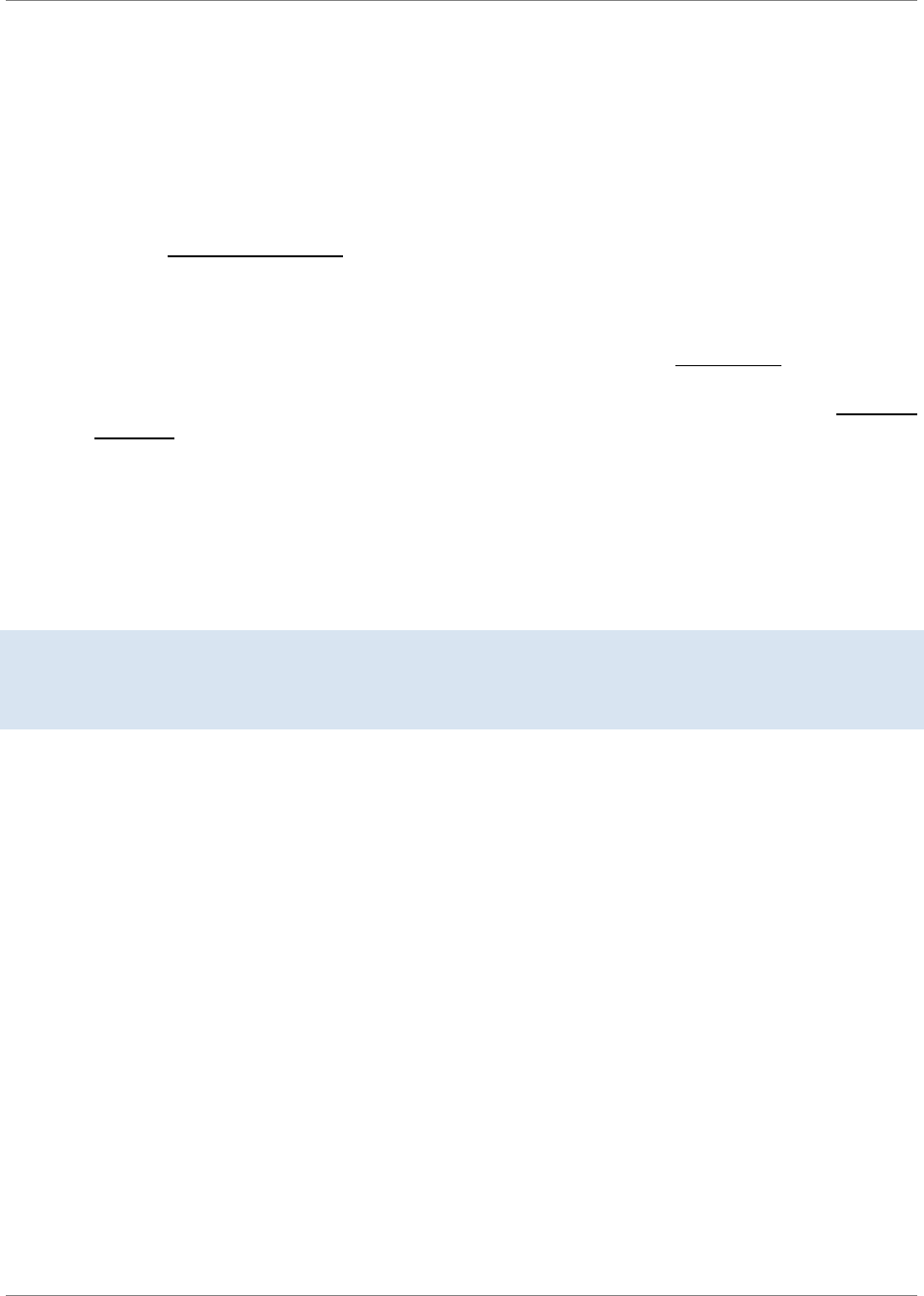
Purchase invoice authorization
In Accounts Payable, to release the purchase invoice for further processing, you can use these types
of invoice authorization:
▪
Confirmation of received purchase invoices
If you record the receipt in the Received Purchase Invoices (tfacp1500m000) session, you
can link assigned approvers to the invoice. The assigned approver can verify the invoice, and
then register the invoice.
▪
Authorization of registered invoices
To exclude invoices from the automatic payment procedure, if you register an invoice in the
Purchase Invoice Entry (tfacp2600m000) session, you can link a hold reason to the invoice.
For example, reasons for blocking an invoice can be incorrect quantities, incorrect prices, or
defects found in the received goods. To release the invoice for further processing, an assigned
approver must remove the hold reason.
▪
Authorization of price differences and additional costs
If the invoice amount differs from the order amount and the difference exceeds the matching
tolerances, an authorized user must approve the price difference and the additional cost.
▪
Payment authorization
For the types of invoices for which payment authorization is required, an authorized user must
approve the invoices for payment.
Note
In Cash Management, you can authorize users to process the payments and approve the payment
batch. For details, refer to Payment authorization in Cash Management – setup
Print a report
You can use the Print Not Fully Approved Invoices (tfacp1402m000) session to print a report of the
invoices that require an action by the assigned approver or authorized user before they can be processed
further.
The report shows the invoices that require one or several of these actions:
▪
Removal of the hold reason
▪
Approval of the price difference and additional costs
▪
Approval for payment.
Purchase invoice authorization history
For the approval history of a purchase invoice, LN registers the history of these invoice details:
▪
Approval of the price difference and additional costs
▪
Approval for payment
62 | Infor LN Invoicing | User Guide for Invoicing
Miscellaneous

▪
The hold reason
▪
The assigned approver
▪
The date before which the invoice must be approved
In the Invoice Authorization History (tfacp2510m000) session, LN displays the current value, the previous
value, the user and assigned approver who made the change, and the modification date.
If you archive and delete fully paid purchase invoices, LN also archives and deletes the approval history.
Infor LN Invoicing | User Guide for Invoicing | 63
Miscellaneous

64 | Infor LN Invoicing | User Guide for Invoicing
Miscellaneous

activity
The smallest part of the activity structure used for a time-scaled budget. An entity that is used to represent
a part of a project in an activity structure.
LN distinguishes these activity types:
▪
WBS Element
▪
Control Account
▪
Work Package
▪
Planning Package
▪
Milestone
See: activity structure
appropriate menu
Commands are distributed across the Views, References, and Actions menus, or displayed as buttons.
In previous LN and Web UI releases, these commands are located in the Specific menu.
archive company
A company created for the purpose of archiving historic documents and data. You can store redundant
data in an archive company.
To access and retrieve data from an archive company, you must change company to the archive company.
assigned approver
The person or department that is responsible for removing a hold reason from a registered invoice and
release the invoice for further processing.
Infor LN Invoicing | User Guide for Invoicing | 65
A
Appendix A
Glossary

bank reference
A unique number used by the banks to reference each invoice. The bank reference number can be a
string of 20 or more digits, composed in such a way that a number check can be performed to check its
validity.
In some countries, the bank reference number is a critical component of payment and receipt transactions,
especially if payment slips are used. If bank reference numbers are used, the bank reference number
must appear on the invoice document, on the payment slip if applicable, and on the payment document.
business object
A business related object, such as a purchase order or an organizational unit. A business object has
information stored in the business object attributes, such as the purchase order number or the
organizational unit name. A business object also contains a set of actions, known as business object
methods, that can manipulate the business object attributes, such as Create Purchase Order and List
Organizational Units.
From a development perspective, a business object is a collection of tables, and functions that manipulate
these tables, implemented simultaneously during the development phase. A business object is identified
by the combination of a package code, module code, and business object code.
collect order
An order type in which goods are immediately issued from inventory upon order entry. The goods are
then immediately collected by the customer. When the sales order lines are created, the related
transactions are automatically concluded.
When you create and save a collect sales order, LN sets the sales order status to Closed. At the same
time, LN creates a warehouse order and sets the status of the warehouse order to Shipped. The
warehouse order type is the warehouse order type that is linked to the sales order type.
control code
A common parent cost-object level, a level above the special cost object.
A control code is used for control purposes. For analysis, you can group cost objects of the same cost
type under a control code. If you use a cost object to categorize a group of cost objects, it can be its
own control code. You cannot have more than one control code in a tree. This is used for the frozen
bottom-up budget.
66 | Infor LN Invoicing | User Guide for Invoicing
Glossary

cost component
A cost component is a user-defined category for the classification of costs.
Cost components have the following functions:
▪
To break down an item's standard cost, sales price, or valuation price.
▪
To create a comparison between the estimated production order costs and the actual production
order costs.
▪
To calculate production variances.
▪
To view the distribution of your costs over the various cost components in the Cost Accounting
module.
Cost components can be of the following cost types:
▪
Material Costs
▪
Operation Costs
▪
Surcharge on Material Costs
▪
Surcharge on Operation Costs
▪
WIP Transfer Costs
▪
General Costs
Note
If you use Assembly Control (ASC), you cannot use cost components of the General Costs type.
cost object
A type of cost carrier for the resources used in your project.
These cost objects are available:
▪
Material
▪
Labor
▪
Equipment
▪
Subcontracting
▪
Sundry Costs
▪
Overhead
Cost objects can be standard or specific for a project. The cost object is related to a control code for
cost controlling purposes.
Infor LN Invoicing | User Guide for Invoicing | 67
Glossary

cost type
A way of categorizing cost objects and control codes according to the nature of the costs that they
represent.
LN Project distinguishes these cost types:
▪
Materials
▪
Labor
▪
Equipment
▪
Subcontracting
▪
Sundry Costs
▪
Overhead
country set
A user-defined group of countries.
credit note
The correction form for a (partly) returned purchase or sales order. The credit note states the quantity
and value of the goods concerned and the reason for the credit.
delivery note
A transport document that provides information on a consignment contained in one truck (or other vehicle)
and refers to an order or a set of orders for one consignee at a delivery address. If the truck load contains
shipments for various business partners, the load includes more than one delivery note. The information
on a delivery note includes the delivery date and address, the customer's name, the contents of the
consignment, and so on. In Italy, a delivery note is a legally required document, where it used to be
called BAM (Bolla Accompagnamento Merci). Currently it is called DDT (Documento di Trasporto). In
Portugal and Spain delivery notes are also used, but there they do not have the same legal status as
in Italy.
electronic data interchange (EDI)
The computer-to-computer transmission of a standard business document in a standard format. Internal
EDI refers to the transmission of data between companies on the same internal company network (also
referred to as multisite or multicompany). External EDI refers to the transmission of data between your
company and external business partners.
element
The smallest part of an element structure. An element is used to define the (structure of the) work of
the project, so that you can carry it out.
68 | Infor LN Invoicing | User Guide for Invoicing
Glossary

extension
The specific agreements within or in addition to the initial contract. An extension falls outside the initial
contract with the sold-to business partner. Extensions can be assigned to the bottom-up budget.
LN distinguishes four extension types:
▪
Scope Change
▪
Provisional Amount
▪
Fluctuation Settlement
▪
Quantities to be Settled
GL code
Represents a ledger account and the corresponding dimensions. GL codes are used to represent ledger
accounts to users who are not familiar with the structure of the chart of accounts.
To specific logistic transactions, you can link a GL code. Such integration transactions are mapped
directly to the ledger account and dimensions of the GL code, they are not included in the mapping
process.
grand total rounding
To round the grand total amounts on legal documents that you send to your customers, such as sales
quotations, service contracts, and sales invoices.
For example, if the currency rounding factor is 0.01 and grand totals must be rounded on 0.05, you can
use grand total rounding and define a grand total rounding factor of 0.05.
hold reason
A code attached to a purchase invoice to block the payment of that invoice.
integration mapping scheme
A scheme that defines the ledger accounts and dimensions to which the integration transactions are
posted.
invoice delivery method
A user-definable way to categorize invoices by their delivery method. LN prints invoices grouped by the
invoice delivery method. Per invoice delivery method, LN sorts and prints the invoices within each
ZIP/postal code by address.
You can select a default invoice delivery method for each invoice-to business partner.
Infor LN Invoicing | User Guide for Invoicing | 69
Glossary

invoice method
The way to calculate project invoices for a given contract type. The method determines when to issue
invoices to the sold-to business partner.
LN distinguishes these invoice methods:
▪
Cost-Plus
The amount is based on the financial amounts entered at cost object level plus a profit. This
method is only available if the contract type is cost plus.
▪
Unit Rate
The amount is based on the financial amounts per unit entered at element or activity level.
Unit-rate invoicing applies to both Fixed Price and Time & Materials contract types.
▪
Installment
The invoice amount is a subdivision of the value. This method is only available if the contract
type is Fixed Price.
▪
Progress Invoice
The invoice amount is based on progress for element or activity. Two types of elements are
allowed: direct and indirect. The calculated amount of the direct elements depends on their
own progress. The calculated amount of the indirect elements is based on the progress of the
project as a whole and can never be more than 100%.
▪
Delivery Based
Invoicing is based on the sales amounts of the contract deliverables that are linked to the
contract shipments.
invoicing batch
Selects the order types and orders to be invoiced. If you process an invoicing batch, LN selects the
invoicing data and generates the invoices for the order types and orders selected through the invoicing
batch.
invoicing batch template
Defines the type and number of orders that you can select through the invoicing batch. For example,
the types of orders can be Sales, Freight, Projects, or Service, and the number of orders of each type
can be None, One, or Several.
invoicing method
A set of parameters that defines, among other things, the types of orders and orders lines that can be
combined on an invoice, and the type of invoice to be generated and the costs to be aggregated on
Project invoices and Service invoices. You can define different invoicing methods for your invoice-to
business partners.
invoicing method
This method is only used for contract projects to invoice to Financials.
Capital projects have no invoicing. Sales order projects use Invoicing for invoicing.
70 | Infor LN Invoicing | User Guide for Invoicing
Glossary

invoicing options
Define the text and the layout of the printed invoices and whether or not you can overwrite the default
transaction types and series used for the invoice document numbering.
manual sales invoice
An invoice without a related sales order or goods receipt and which is directly created in Invoicing.
match code
A code that defines a set of priority-based additional criteria that must be applied when self-billed invoices
are automatically matched with corresponding order data.
matched SBI relations code
A number that identifies a set of matched (customer) self-billed invoice lines with billable lines.
monthly billing invoice
A monthly statement of the open sales invoices that you send to an invoice-to business partner. The
business partner generates self-billed invoices and uses the monthly billing invoice for reference.
object type
Defines a business object or business document, such as a sales order or a contract, in the context of
document authorization.
An object type includes one or more tables and specifies this information:
▪
How the tables of the object type relate to each other.
▪
The actions to generate a request for document authorization, which will be processed in ION
Workflow.
▪
What data of the object type must be sent to ION Workflow to perform the actual document
authorization.
Operations Management
A collective name for the non-financial LN packages. Operations Management represents all the logistic
LN packages.
Infor LN Invoicing | User Guide for Invoicing | 71
Glossary

payment schedule
Agreements about the amounts that must be paid by payment period. You can link a payment schedule
to the payment terms and, in this way, to sales invoices and purchase invoices.
Each line of the payment schedule defines a part of the invoice amount that must be paid within a specific
period, the payment method used for the payment, and the discount conditions that apply to the payment.
Note
In many sessions, 'payment schedule' refers to a payment schedule line.
If you use receipts against shipments, 'payment schedule' refers to a shipment.
Synonym: receipt schedule
product category
Group of goods or services to which the same tax rules and calculations apply. Product categories are
used by tax provider software to calculate the sales tax.
progress invoice
An invoicing method based on progress for elements and activities. The difference with unit rate is
twofold.
Unit rate has:
▪
Invoices based on the progress and element or activity sales rate per unit.
▪
Invoices settled with the contract amount.
receipt schedule
See: payment schedule (p. 72)
recurring invoicing batch
A set of one or more invoicing batches set up for recurring processing. If you process a recurring invoicing
batch, LN selects the invoicing data according to the invoicing batches.
sales listing
A list with information about the origin, value, etc., of invoices.
Companies established in European Union (EU) countries are obliged to use this document to make a
tax declaration for their goods transactions within the EU.
LN bases the sales listing on the financial transactions that result from export transactions when the
related invoices are processed.
72 | Infor LN Invoicing | User Guide for Invoicing
Glossary

series
A group of order numbers or document numbers starting with the same series code.
Series identify orders with certain characteristics. For example, all sales orders handled by the large
accounts department start with LA (LA0000001, LA0000002, LA0000003, and so on).
tax country
The country in which the tax must be paid or reported. The tax country can be different from the country
where the goods are issued or delivered.
tax date
The tax rates that are valid on this date are used to calculate the tax amounts.
tax exemption certificate
A certificate issued by a tax authority to a specific business, exempting them from sales tax within the
tax authority's jurisdiction. When you purchase goods or services, you must provide the certificate number
to your supplier to authorize them not to collect the tax.
tax provider
A third party application that facilitates the calculation of taxes.
trade note
Generic term for payment instruments such as bank drafts, checks, promissory notes, and bills of
exchange. Trade notes can be used instead of cash payments if credit is extended to the customer. A
trade note can replace the invoice. Because trade notes are negotiable, they can also be used as a
credit instrument, for example, for discounting and endorsing.
Trade notes can exist on paper and on magnetic supports, according to local business practices and
banking standards.
transaction type
A user-defined three-position code used to identify documents. The series linked to the transaction type
give documents the sequence number.
Infor LN Invoicing | User Guide for Invoicing | 73
Glossary

74 | Infor LN Invoicing | User Guide for Invoicing
Glossary

activity, 65
Activity, 56
Ad hoc invoicing
setup, 15
appropriate menu, 65
archive company, 65
assigned approver, 65
Authorization
purchase invoice, 62
bank reference, 66
Billable lines
sources, 9
business object, 66
call invoicing, 59
collect order, 66
Composing criteria
invoicing, 29
Confirm
invoicing data, 25
control code, 66
Correct
invoicing data, 23
cost component, 67
cost object, 67
Cost plus
invoicing, 55
cost type, 68
country set, 68
Create
invoicing batch, 25
credit note, 68
Date
tax, 47
Delivery based
invoicing, 58
delivery note, 68
Document authorization
ION Workflow, 61
EDI
sales invoices, 30
electronic data interchange (EDI), 68
element, 68
Element
sales price, 56
extension, 69
Financial data
setup, 16
Generate
intracommunity listing, 47
purchase listing, 47
sales listing, 47
GL code, 69
grand total rounding, 69
hold reason, 69
Installments
invoicing, 57
integration mapping scheme, 69
Intracommunity listing
generate, 47
set up, 16
invoice, calls, 59
Invoice aggregation
setup, 13
Invoice combining
setup, 13
Invoice configuration
setup, 14
invoice delivery method, 69
Invoice distribution
setup, 14
invoice method, 70
Invoices
additional text, 19
business partner bank details, 20
header and footer texts, 18
manual, 35
Index

printing, 10
reference text, 19
standard texts, 17, 18
tax articles, 20
invoicing batch, 70
Invoicing batch
create, 25
process, 25
status, 43
invoicing batch template, 70
Invoicing data
confirm, 25
correct, 23
release, 21
remove, 45
select, 27
view, 22
invoicing method, 70, 70
Invoicing method, 55
invoicing options, 71
Invoicing
ad hoc, 35
composing criteria, 29
cost plus, 55
delivery based, 58
installments, 57
procedure, 21, 27
progress, 57
recurrent invoicing, 33
recurring invoicing batch, 33
setup, 13
status, 41
unit rate, 56
ION Workflow, 61
manual sales invoice, 71
Mass invoicing
setup, 14
match code, 71
matched SBI relations code, 71
Matching
self-billed invoices, 39
monthly billing invoice, 71
object type, 71
Operations Management, 71
payment schedule, 72
Printing
invoices, 10
Procedure
invoicing, 21, 27
Process
invoicing batch, 25
product category, 72
progress invoice, 72
Progress
invoicing, 57
Project progress, 55
Purchase invoice
authorization, 62
Purchase listing
generate, 47
set up, 16
receipt schedule, 72
recurring invoicing batch, 72
Release
invoicing data, 21
Remove
invoicing data, 45
Sales invoices
EDI, 30
sales listing, 72
Sales listing
generate, 47
set up, 16
Sales tax, 49
Select
invoicing data, 27
Self-billed invoices
matching, 39
Self-billed invoicing
setup, 15
Separate invoice
tax, 52
series, 73
Service contract installments, 58
Service Order Invoicing, 59
Set up
intracommunity listing, 16
purchase listing, 16
sales listing, 16
Setup
ad hoc invoicing, 15
financial data, 16
invoice aggregation, 13
invoice combining, 13
invoice configuration, 14
invoice distribution, 14

Invoicing, 13
mass invoicing, 14
self-billed invoicing, 15
stamp tax, 52
tax data, 16
Sources
billable lines, 9
Stamp tax
setup, 52
Standard text
on invoices, 18
Status
invoicing, 41
invoicing batch, 43
tax country, 73
Tax data
setup, 16
Tax
date, 47
separate invoice, 52
tax date, 73
tax exemption certificate, 73
tax provider, 73
Tax provider, 49
Text
on invoices, 19
Texts
on invoices, 17, 18, 19, 20, 20
trade note, 73
transaction type, 73
Unit rate
invoicing, 56
View
invoicing data, 22

